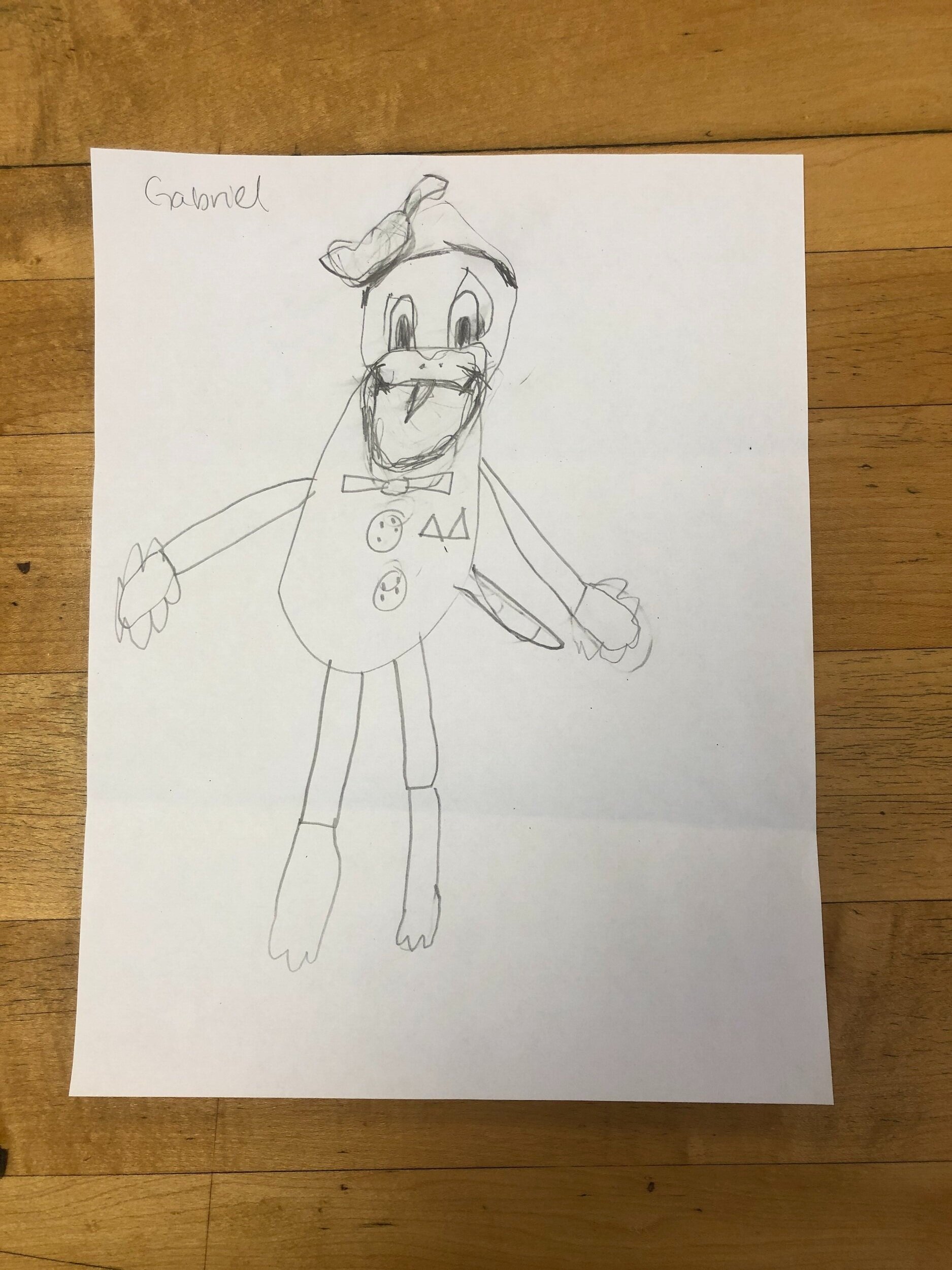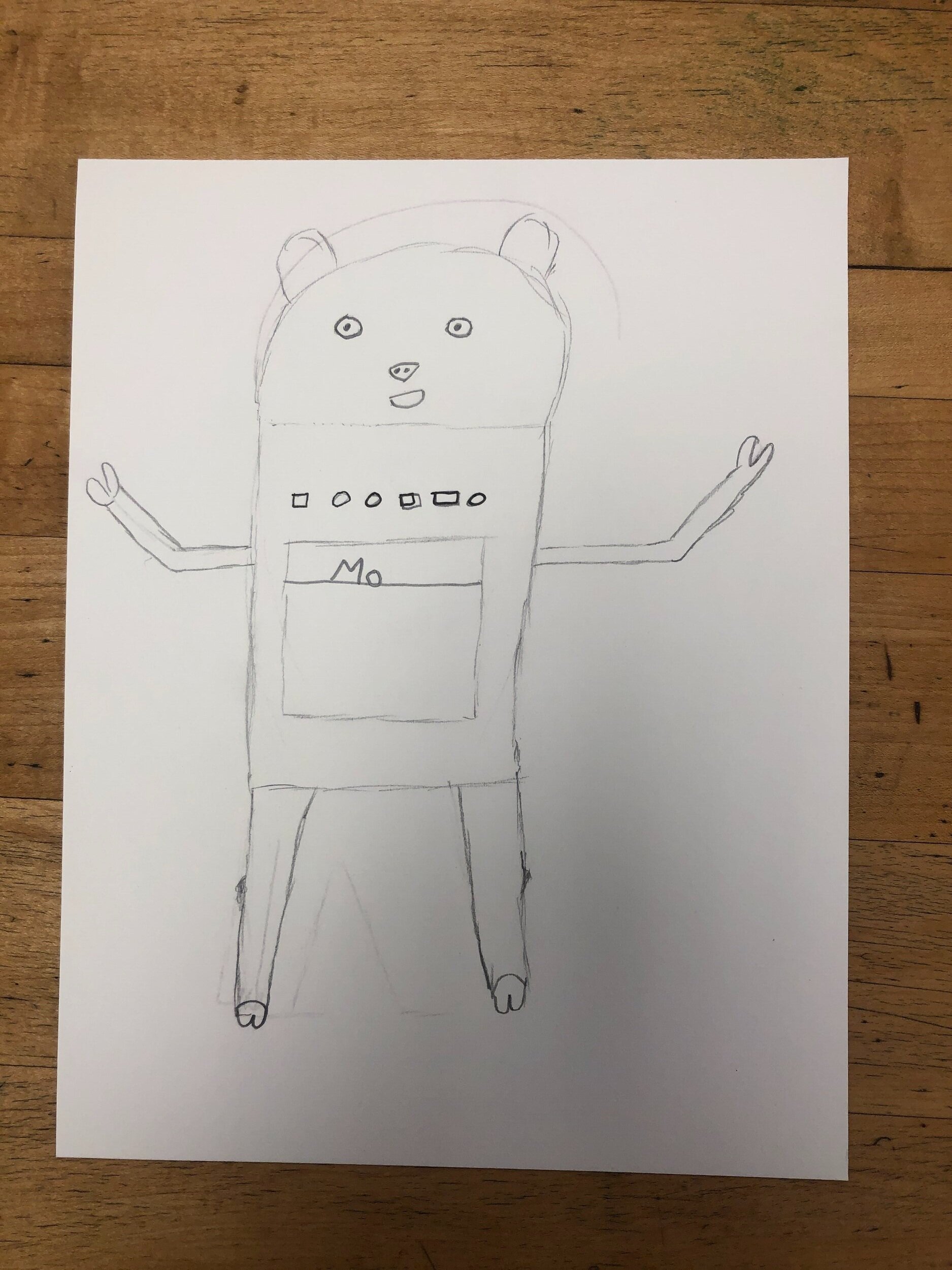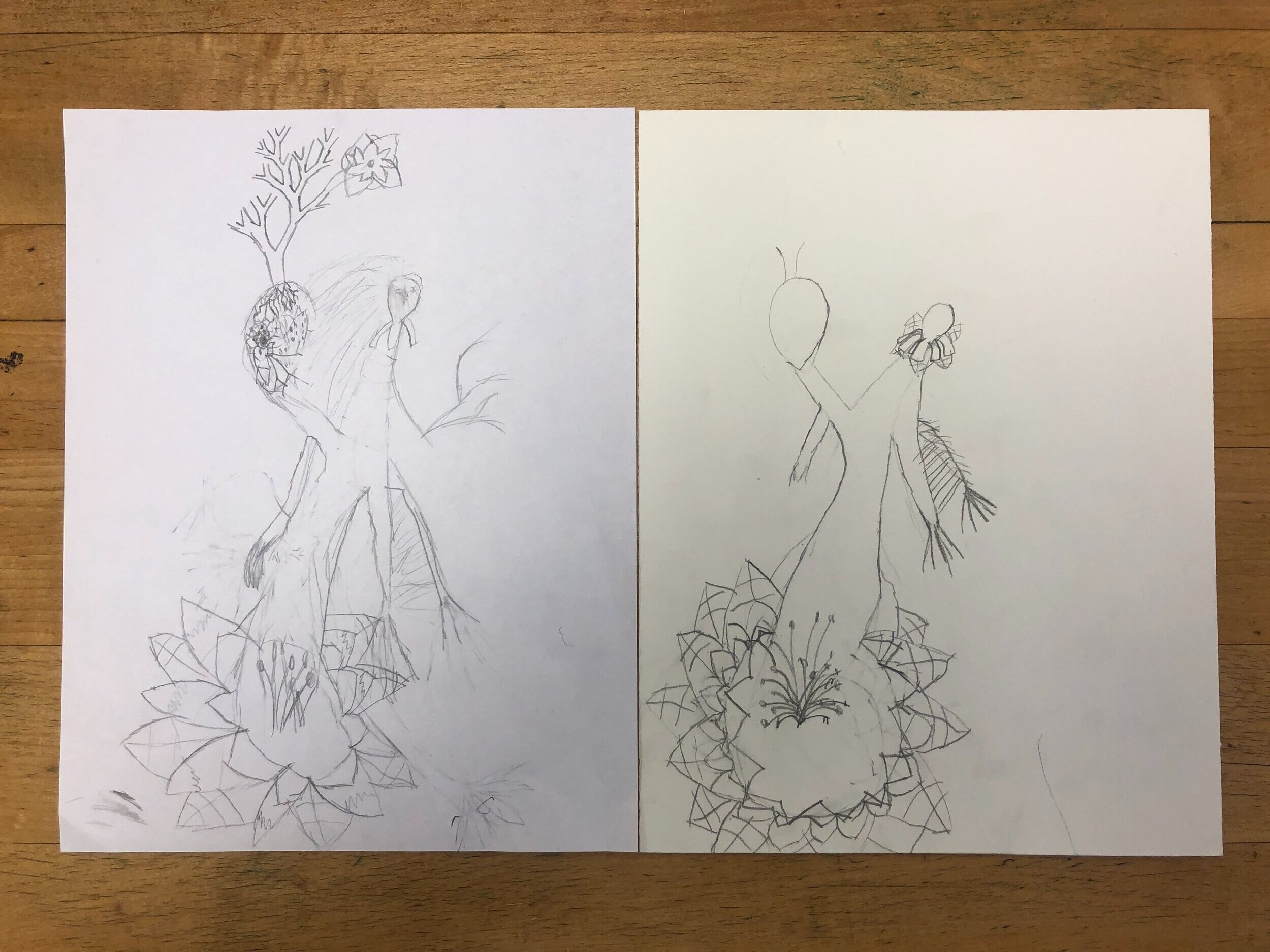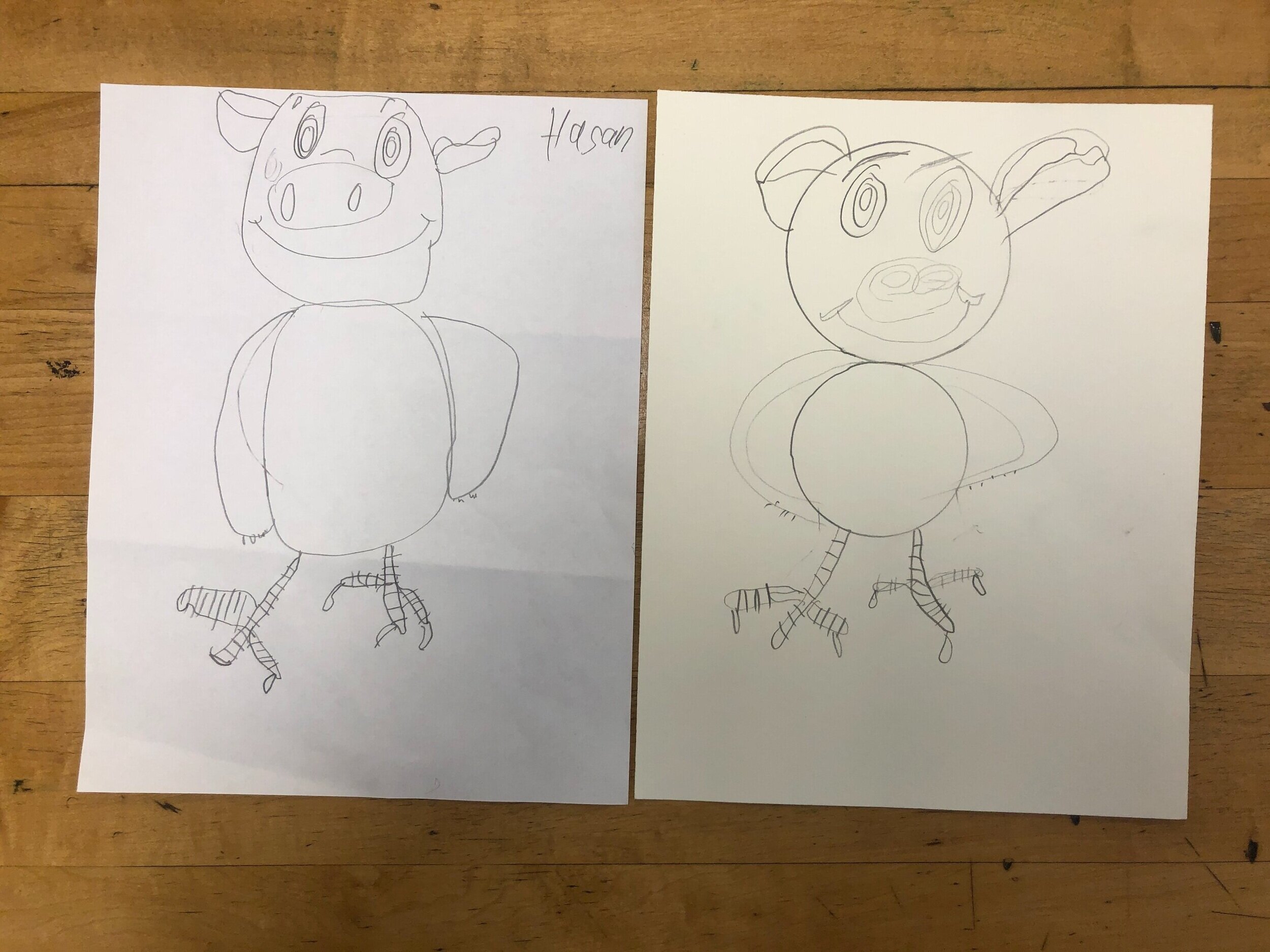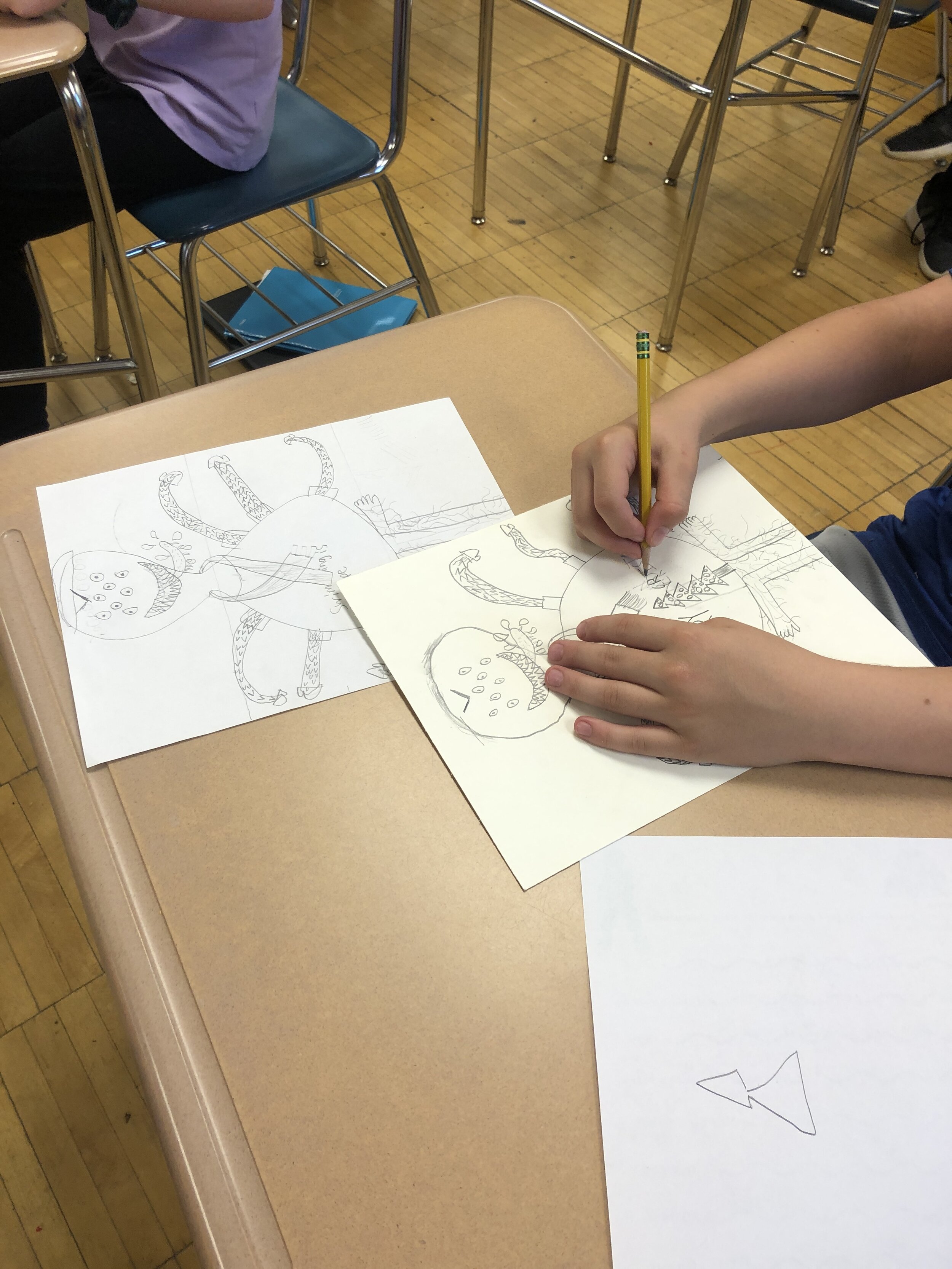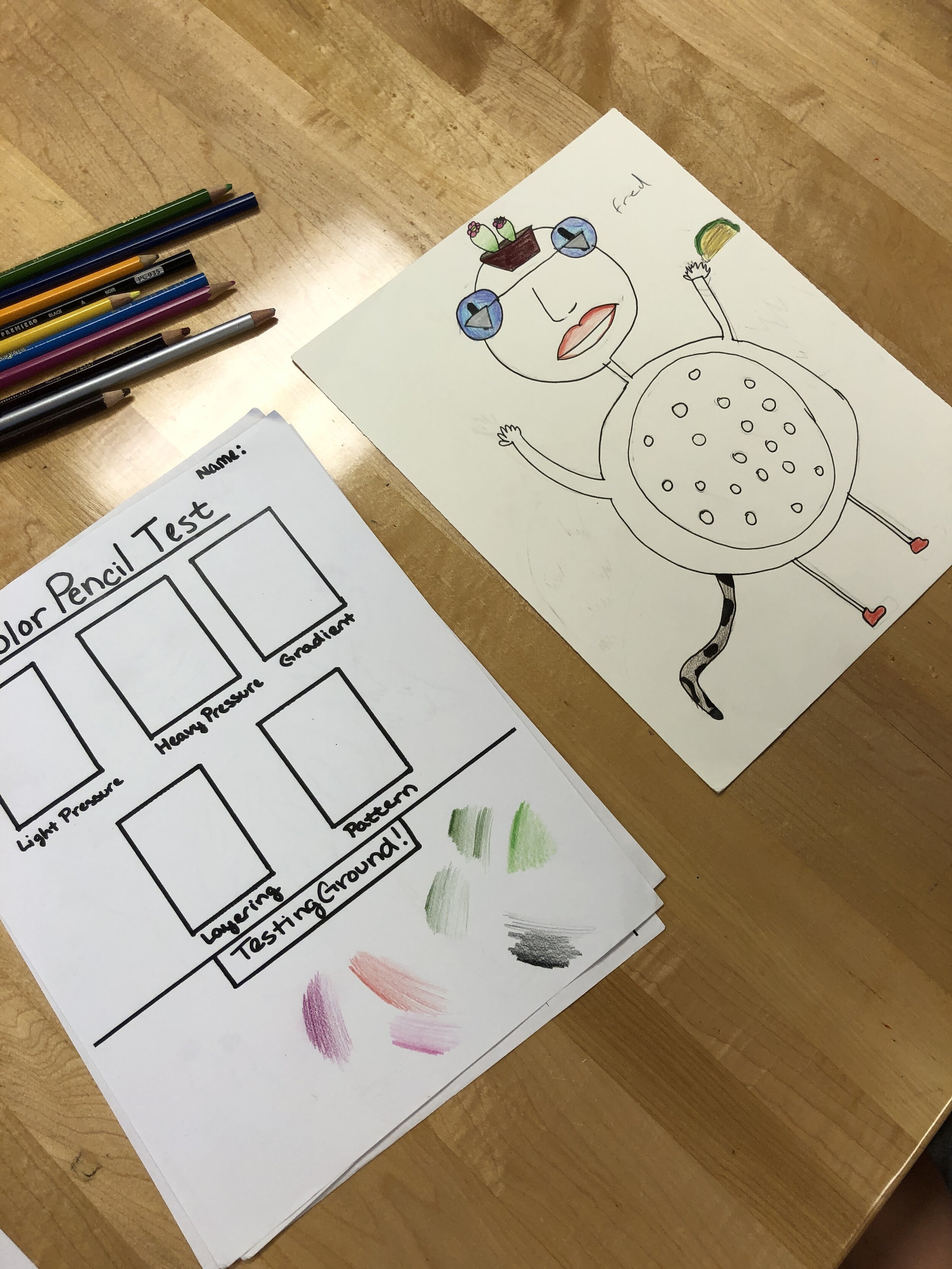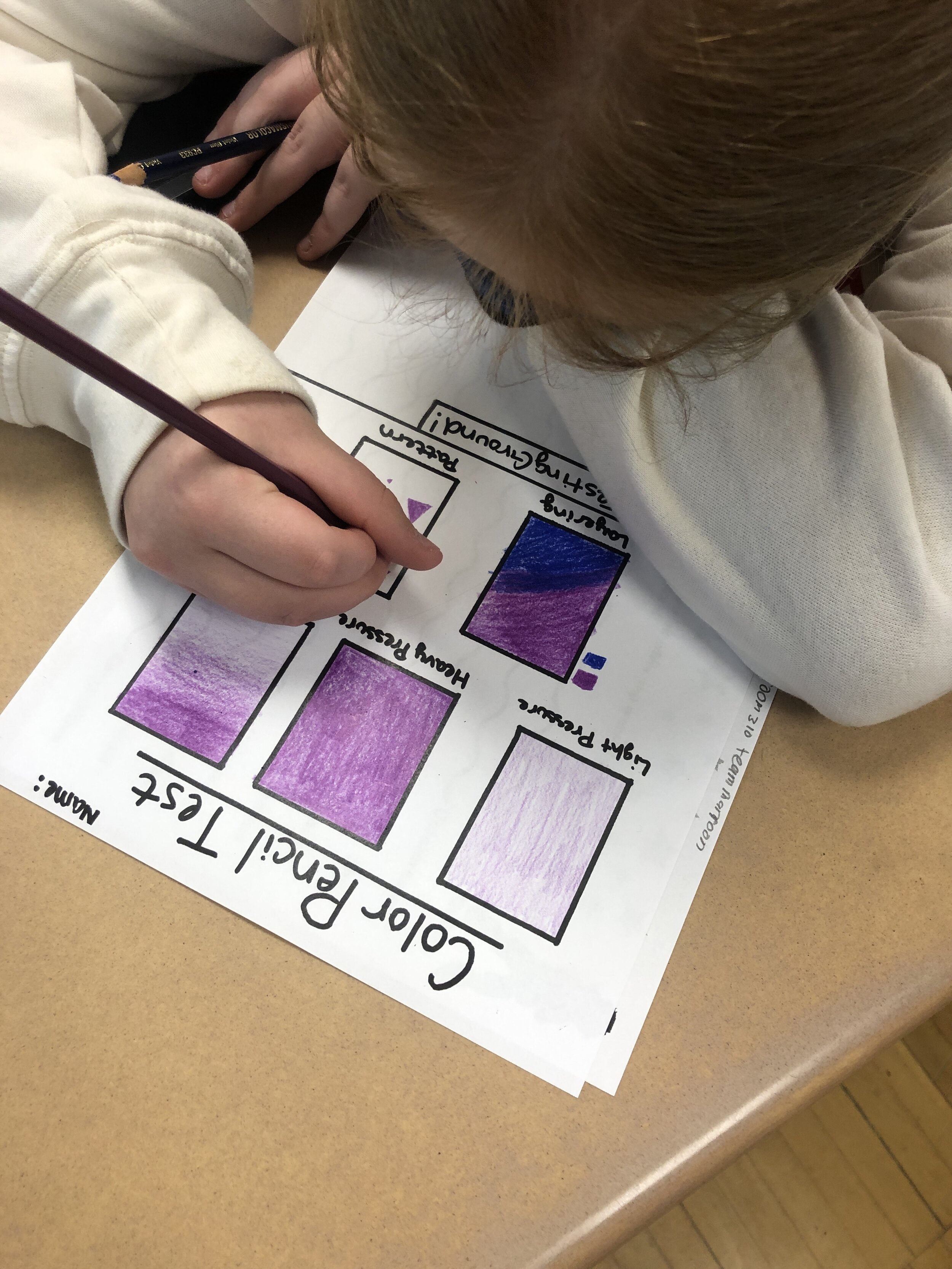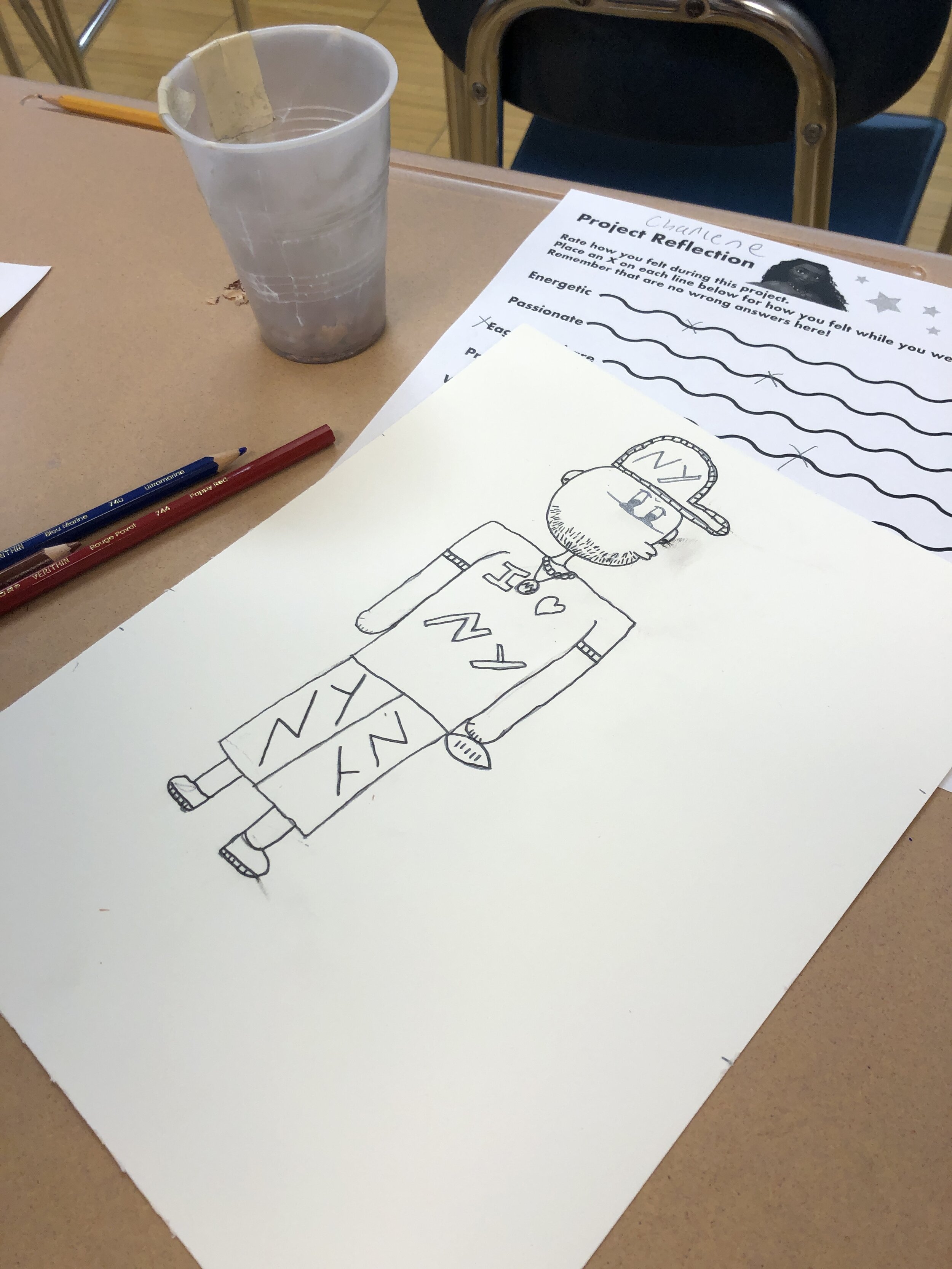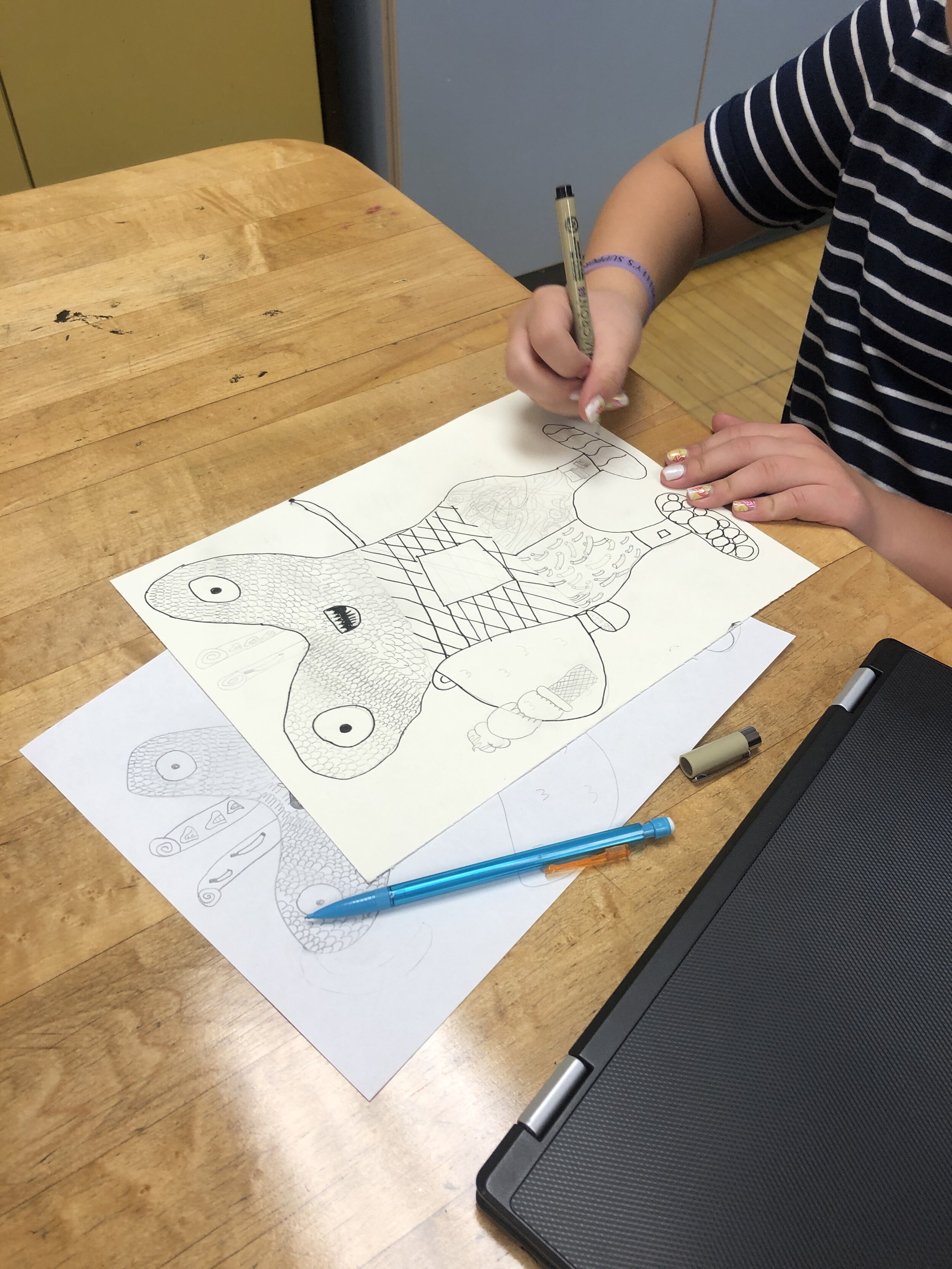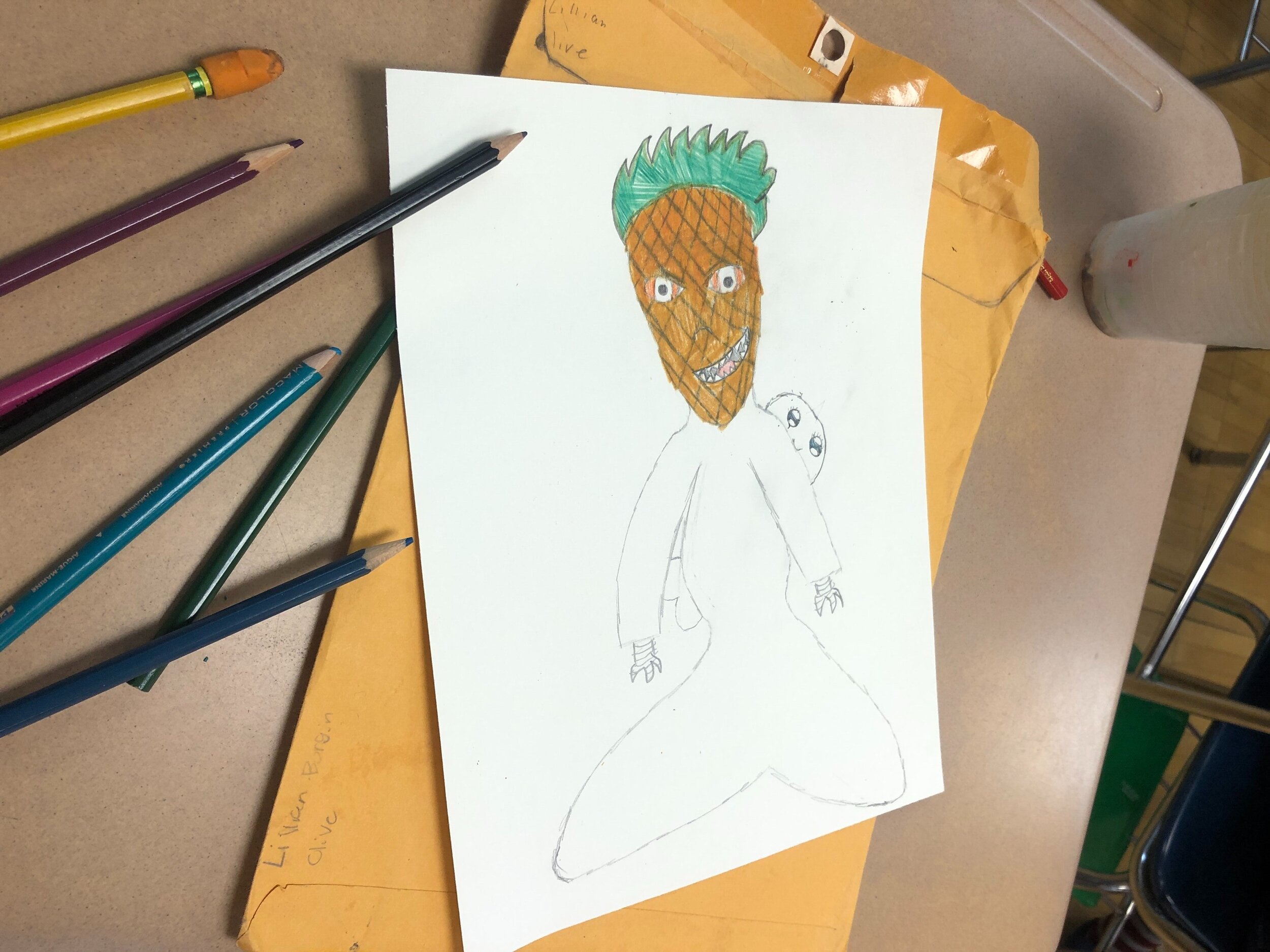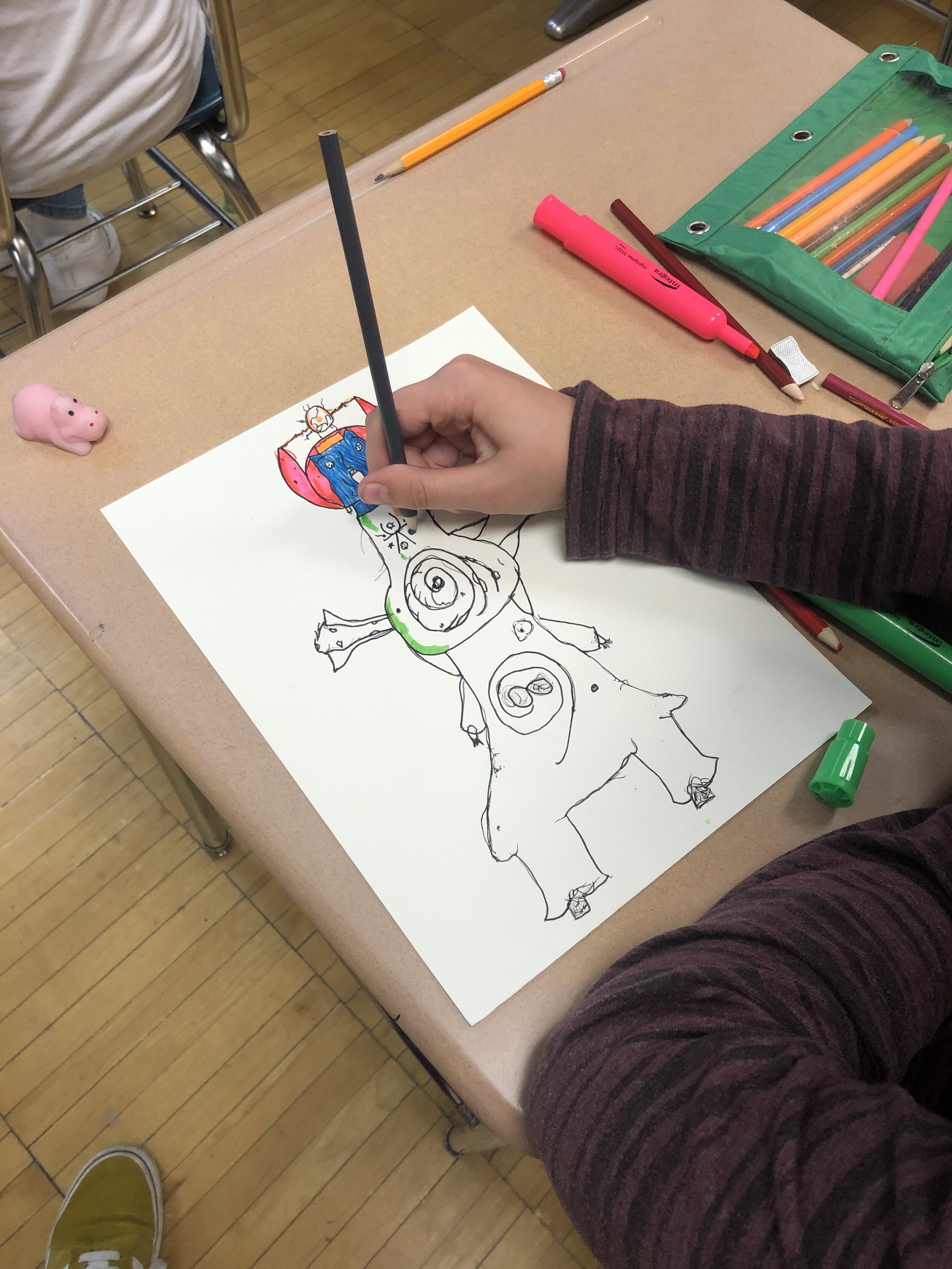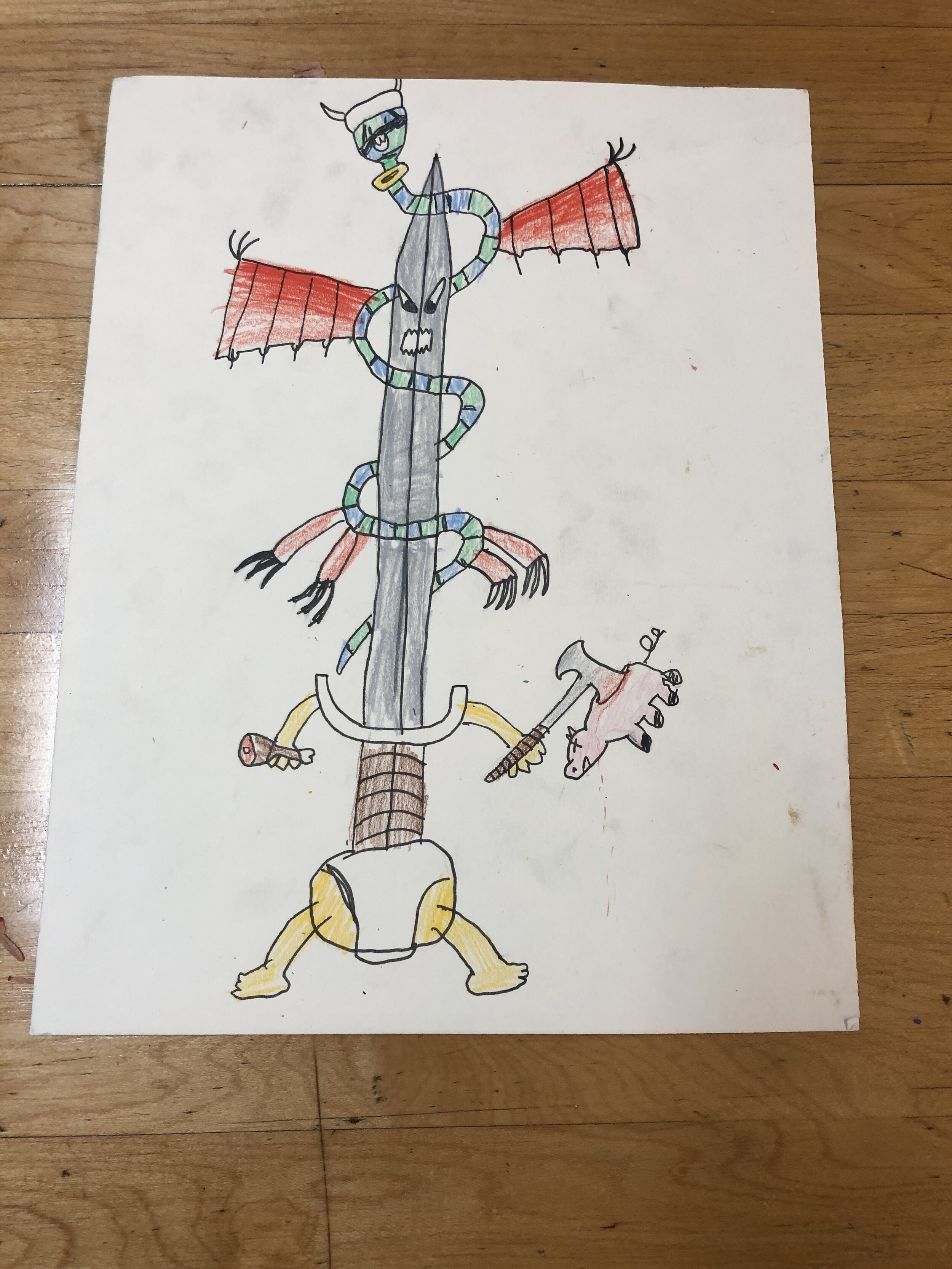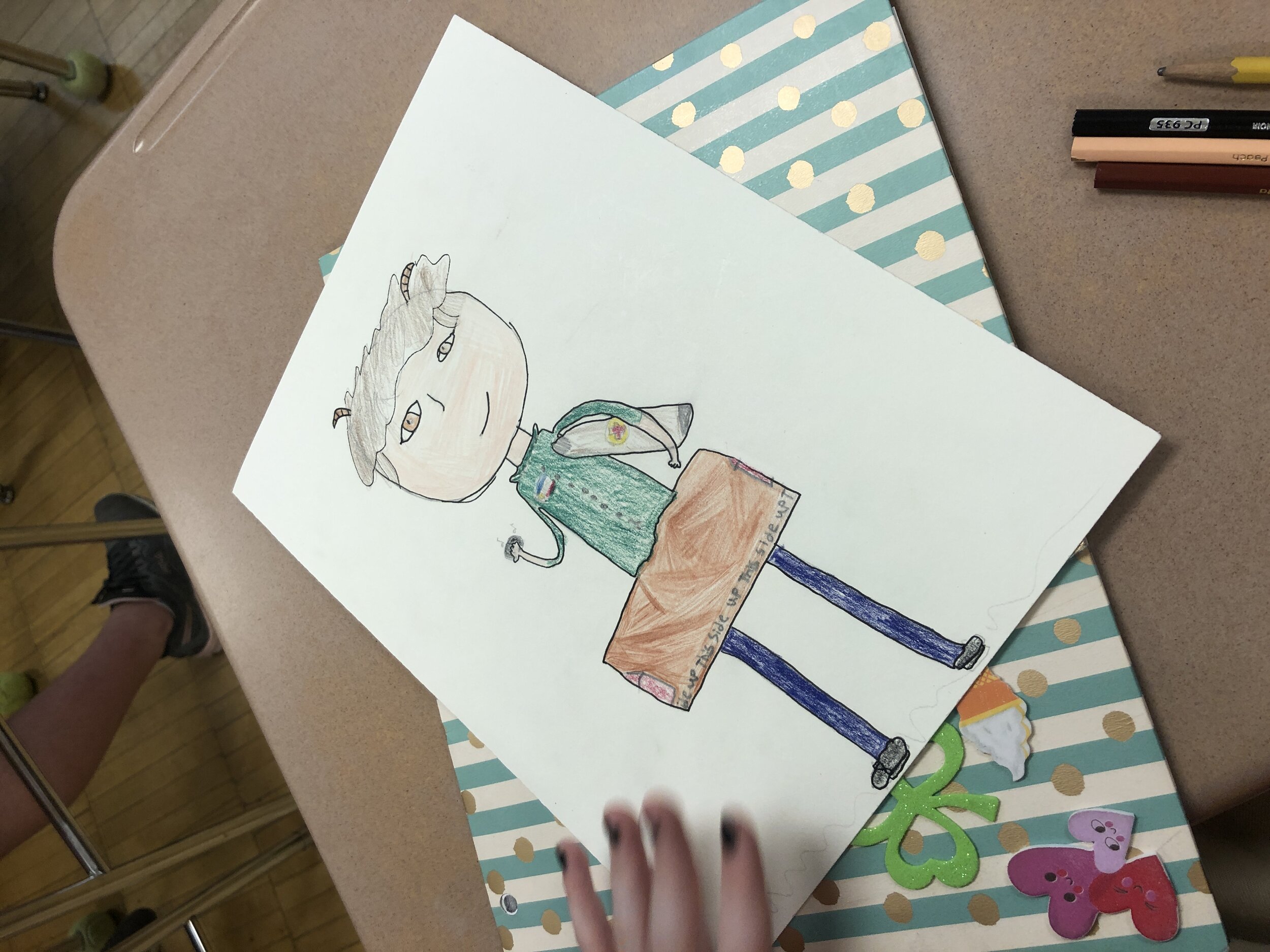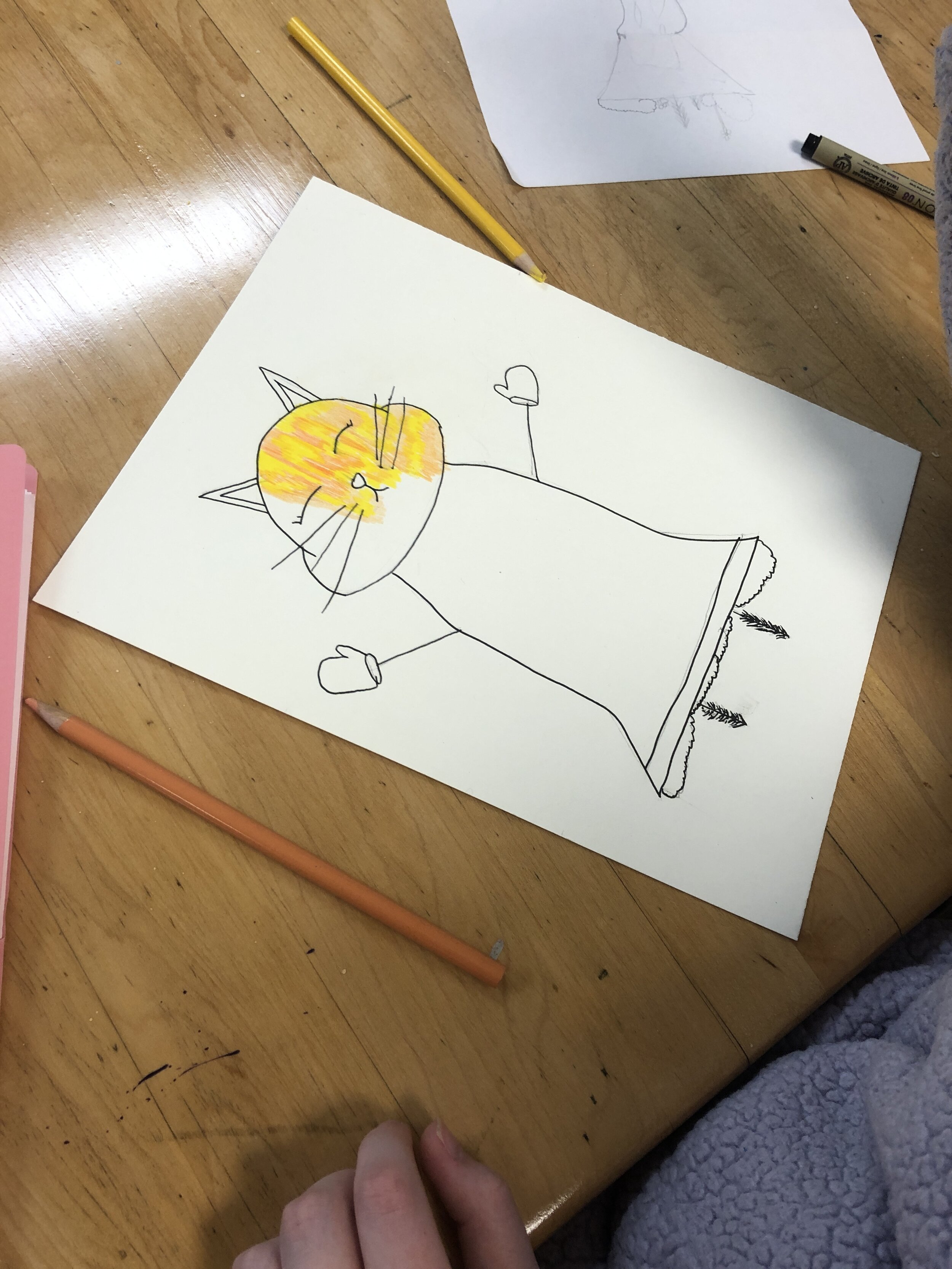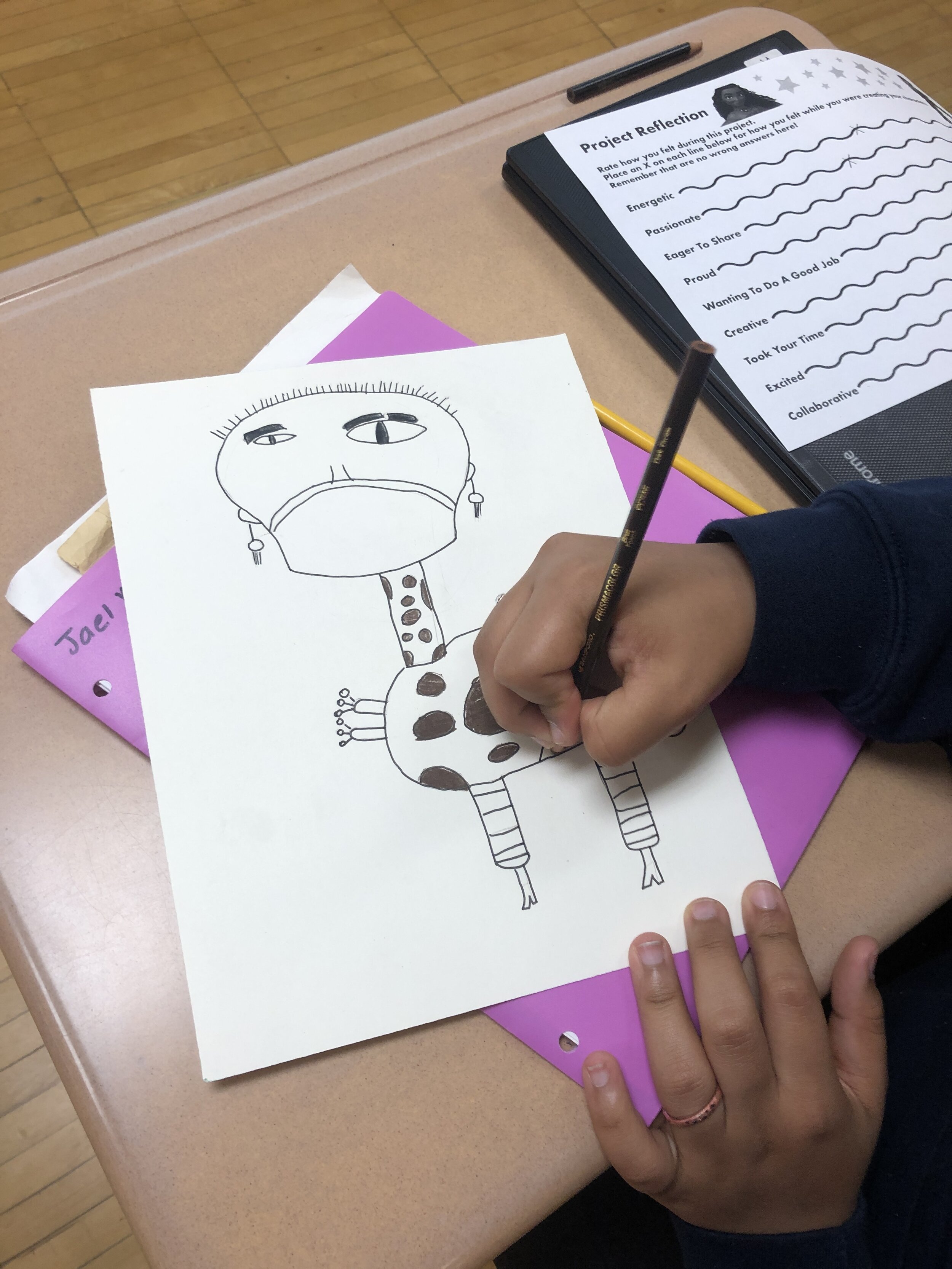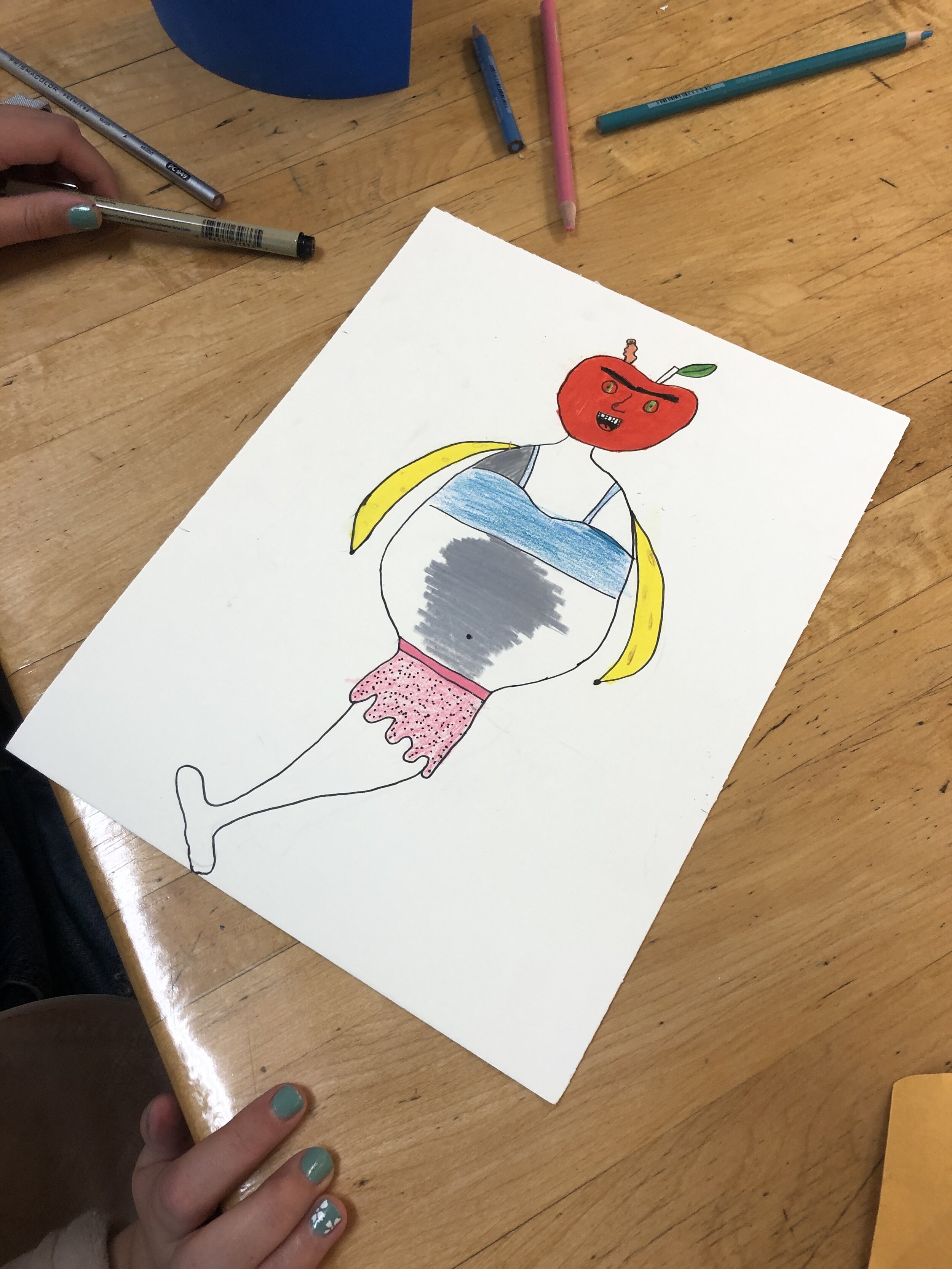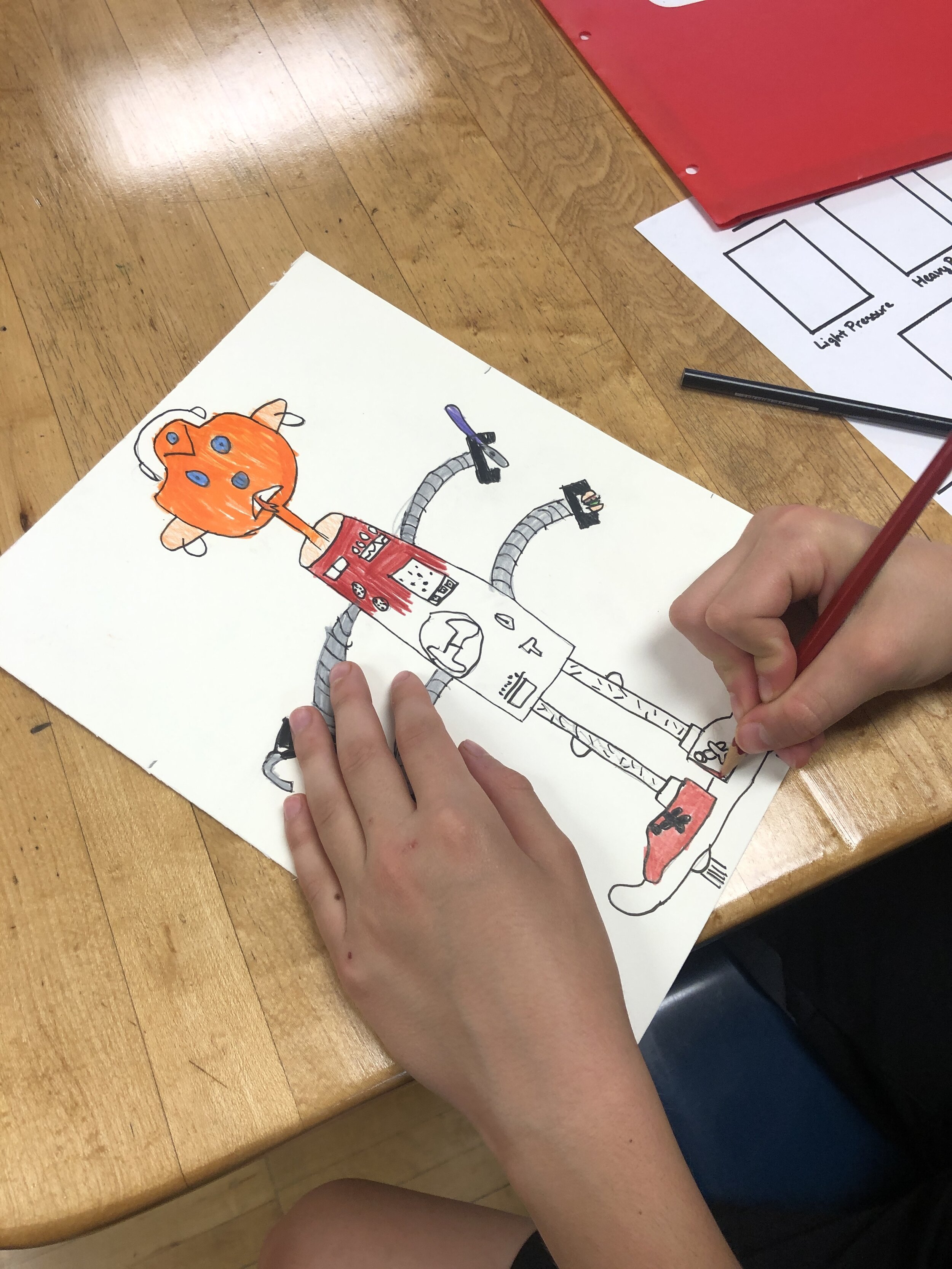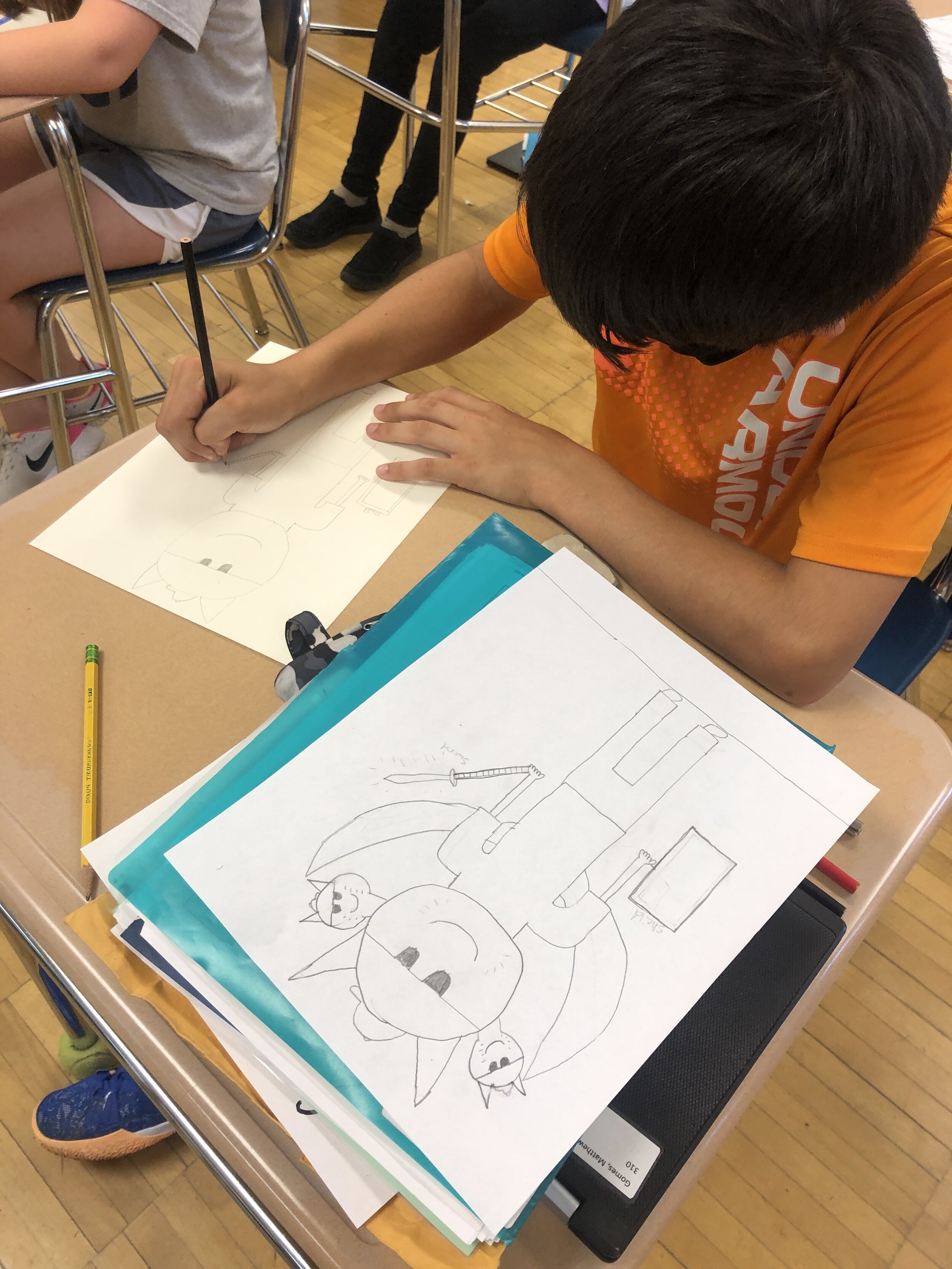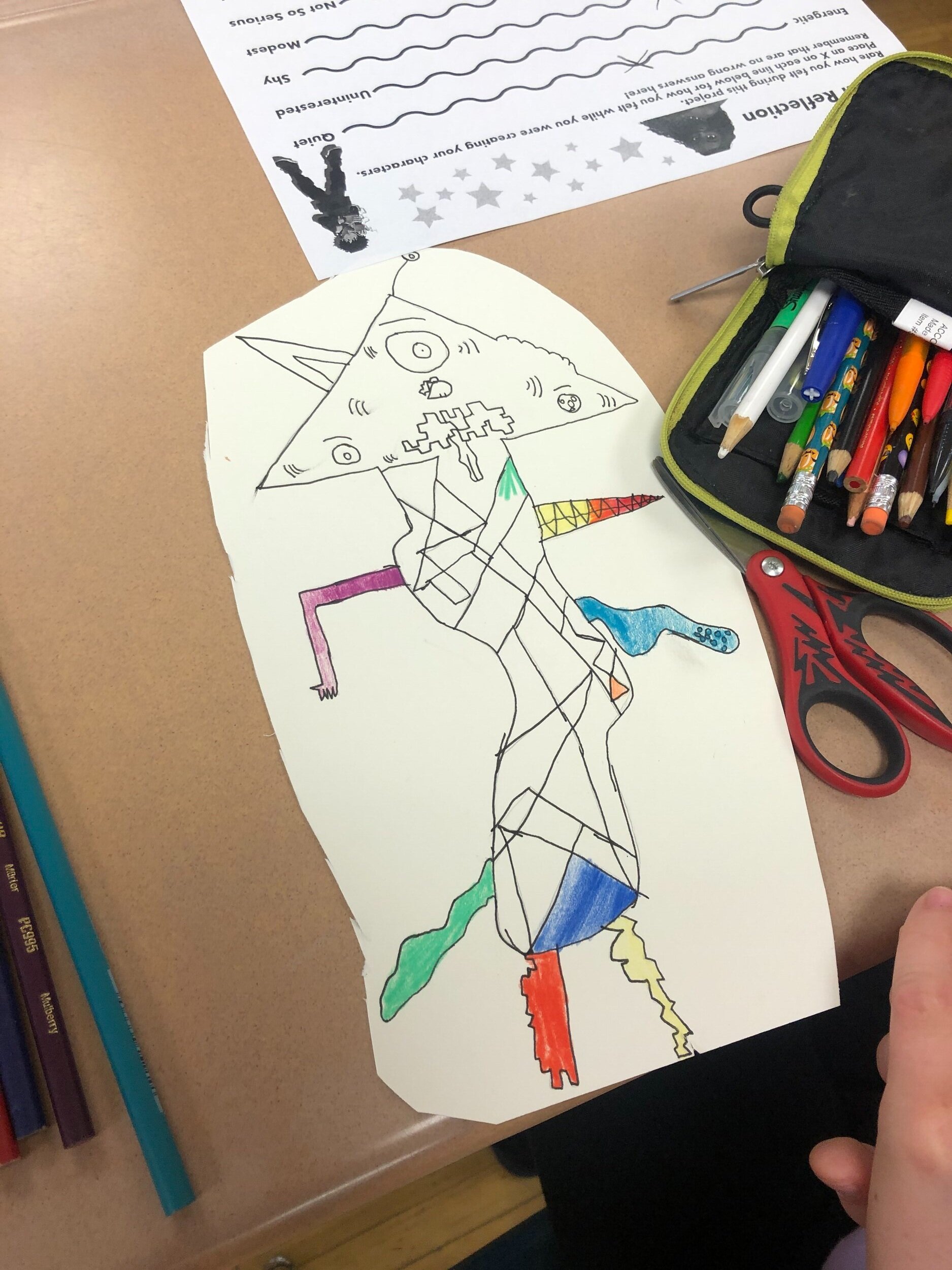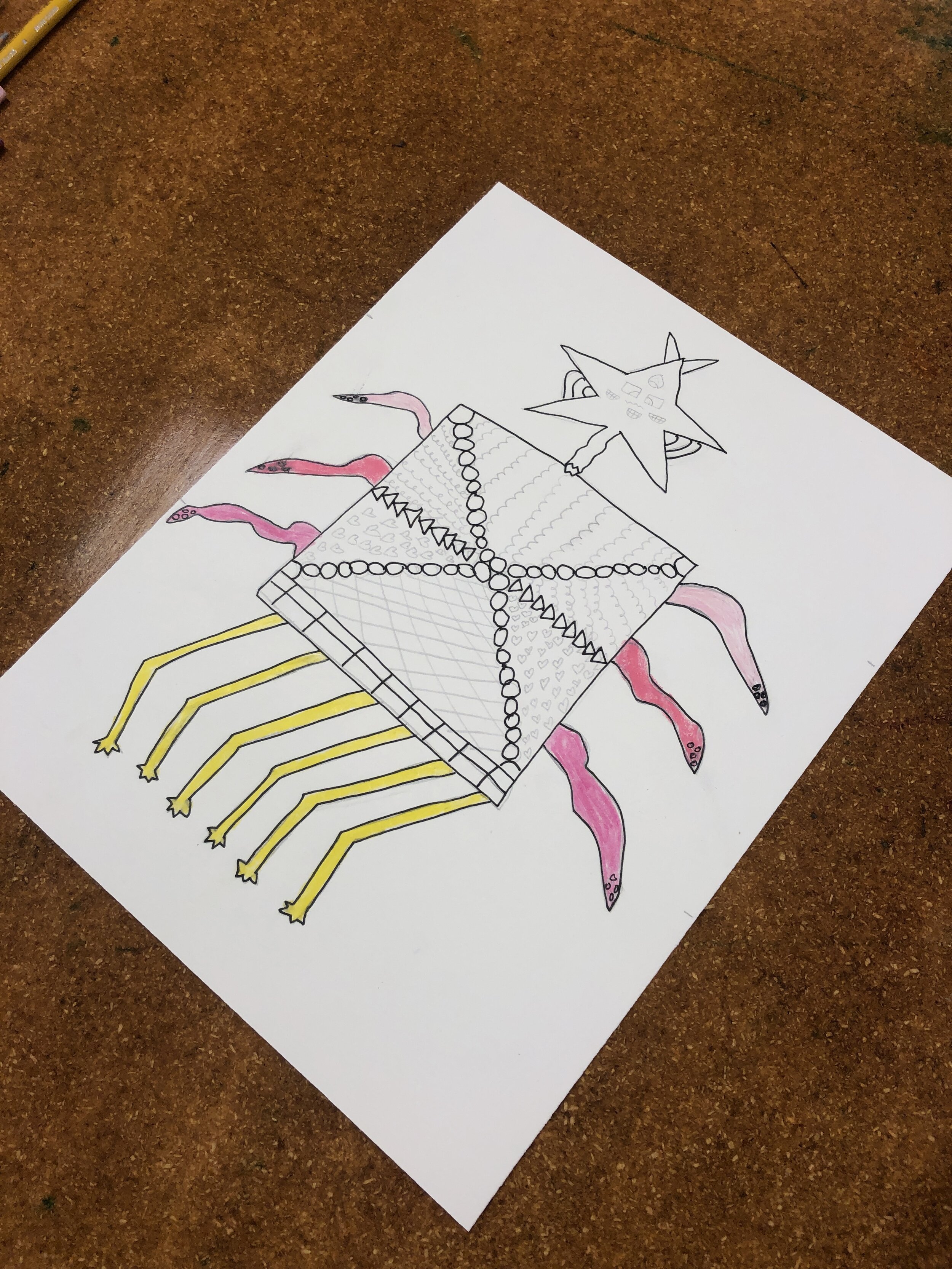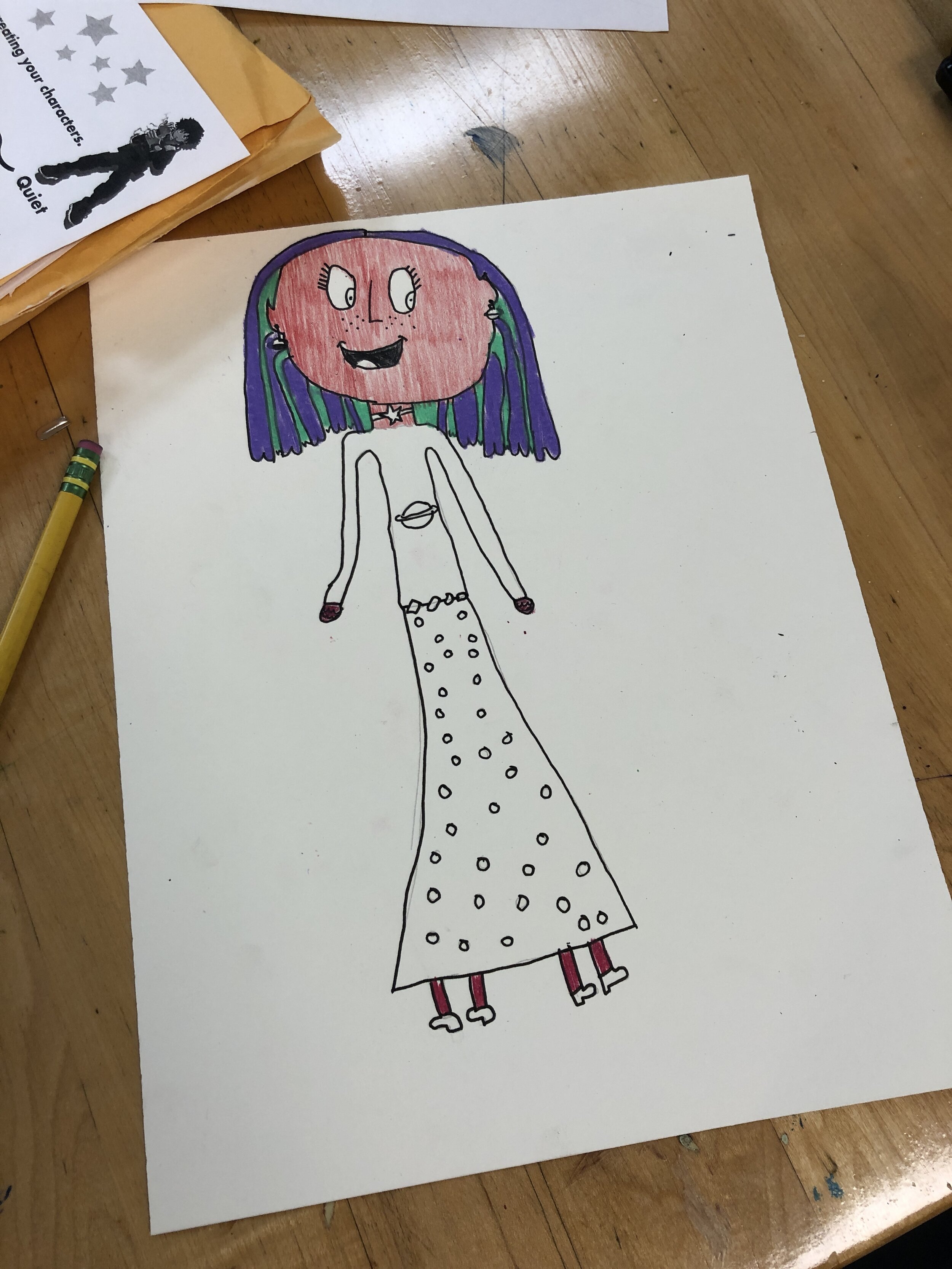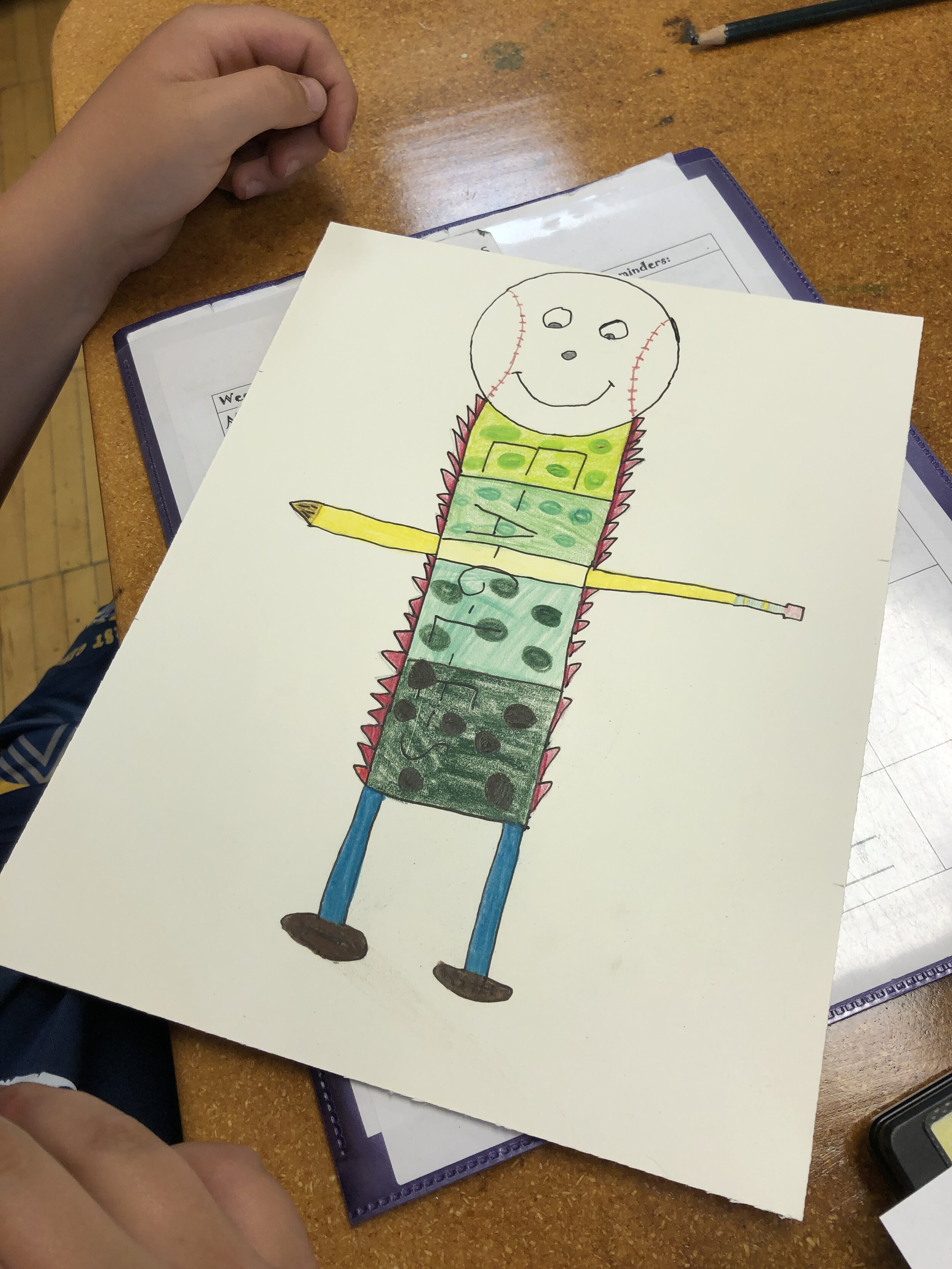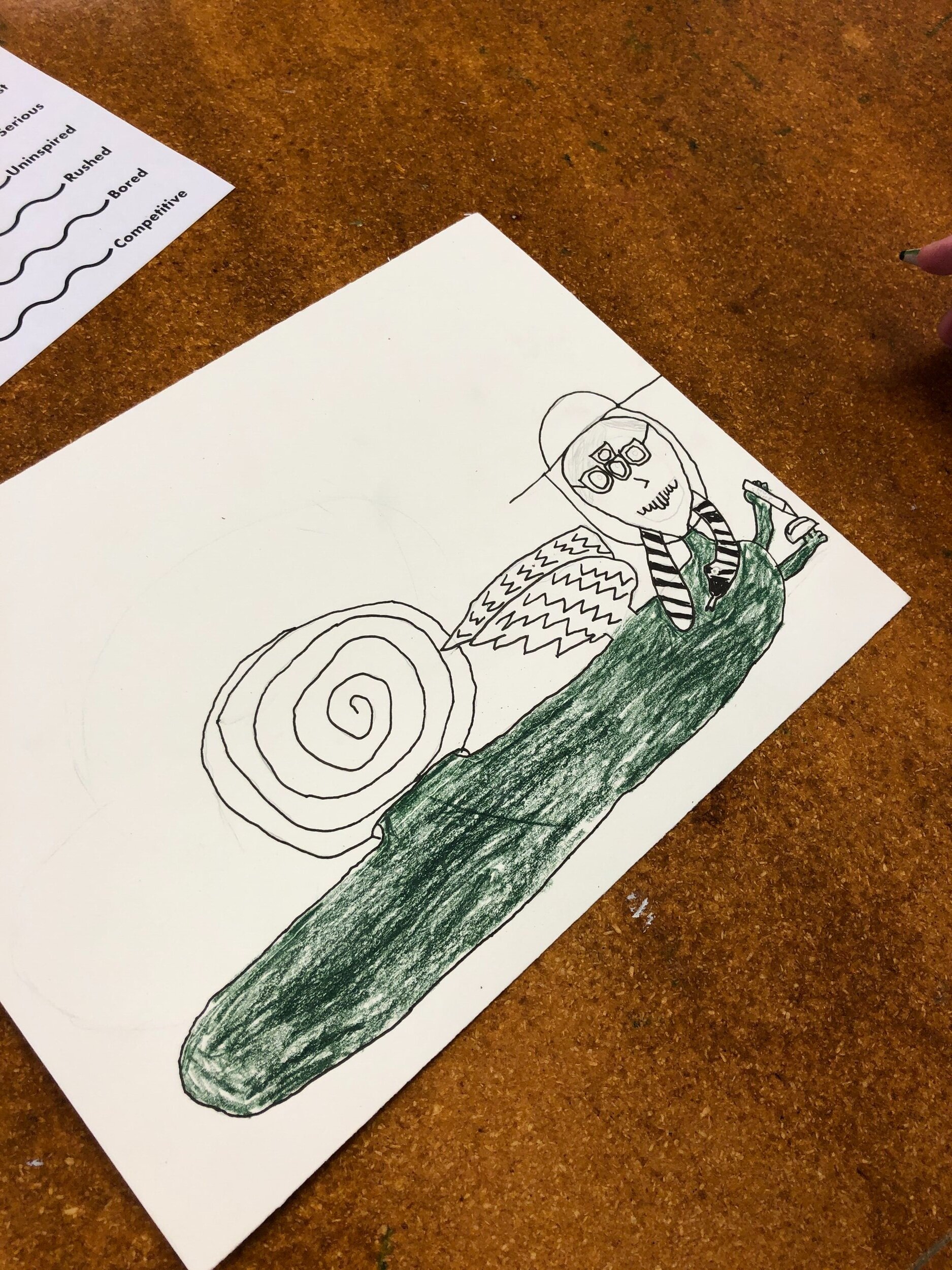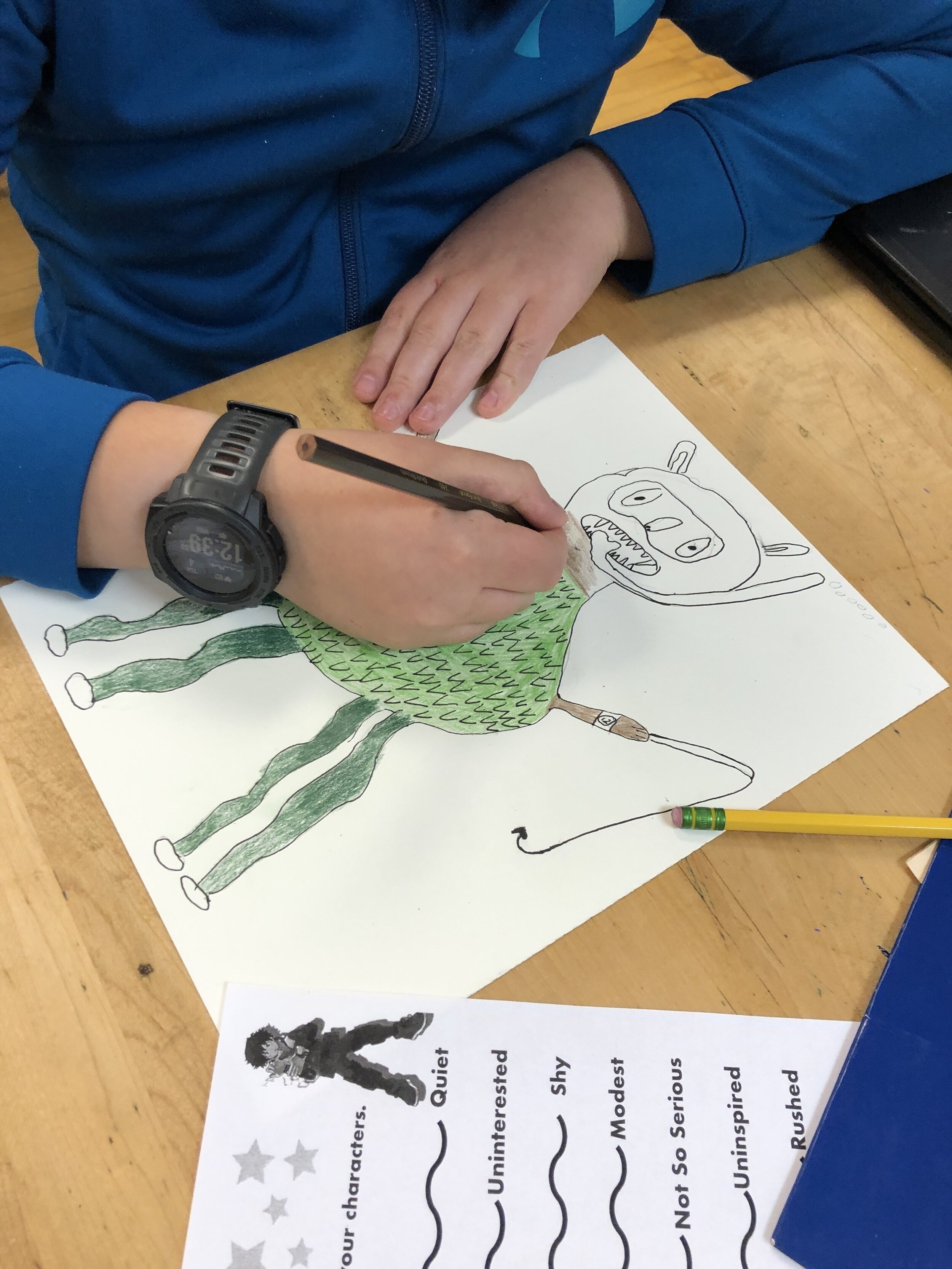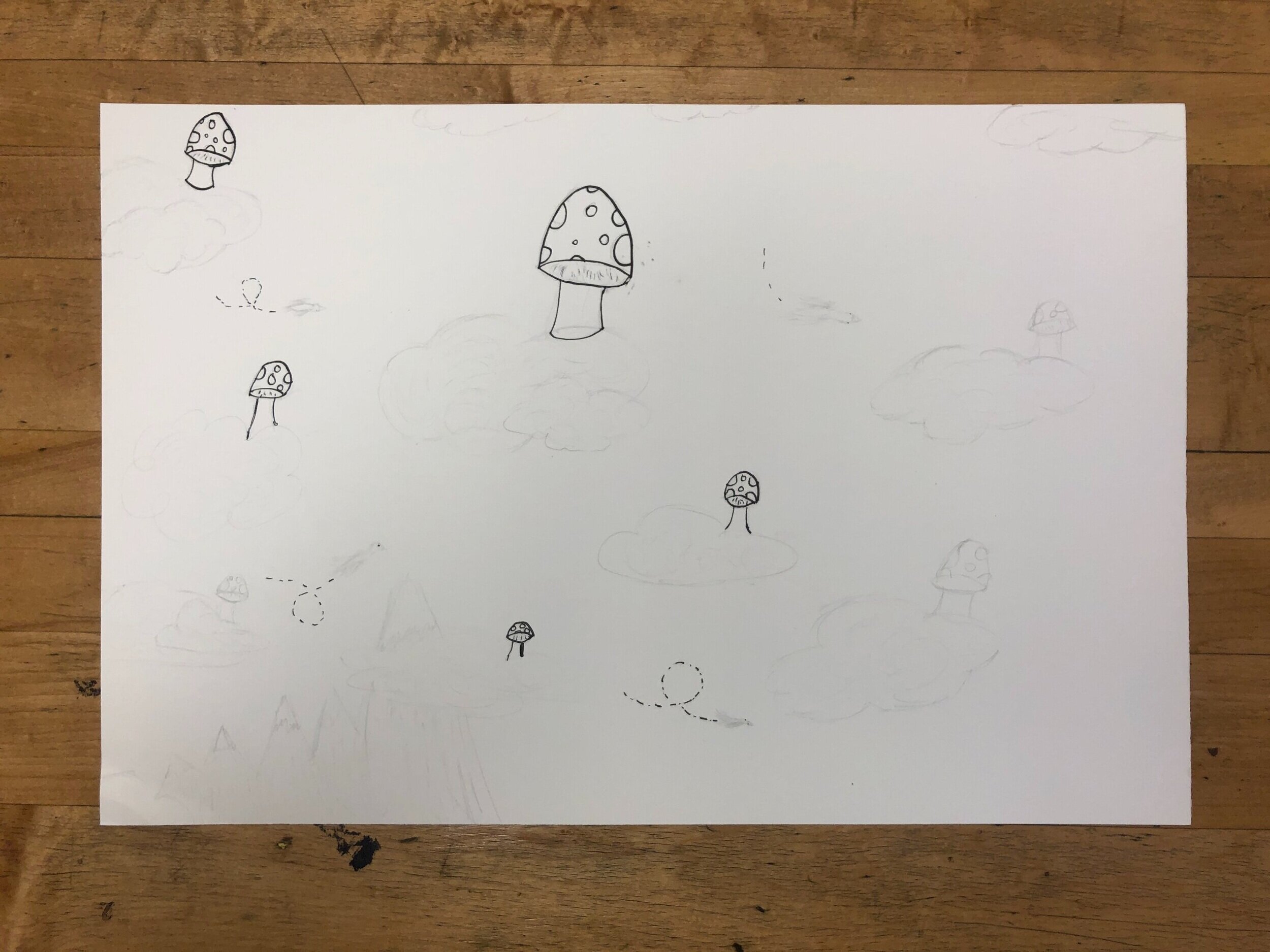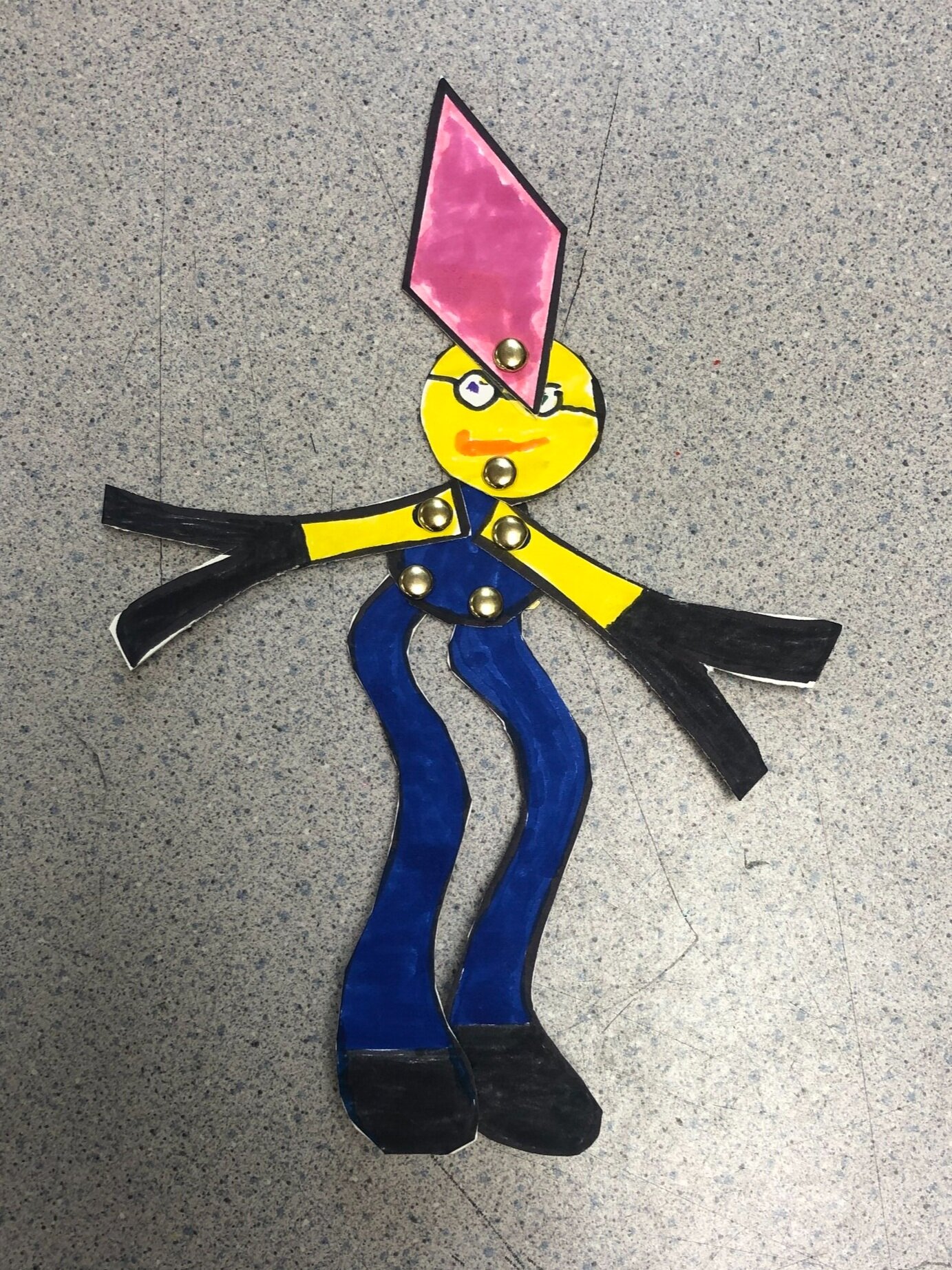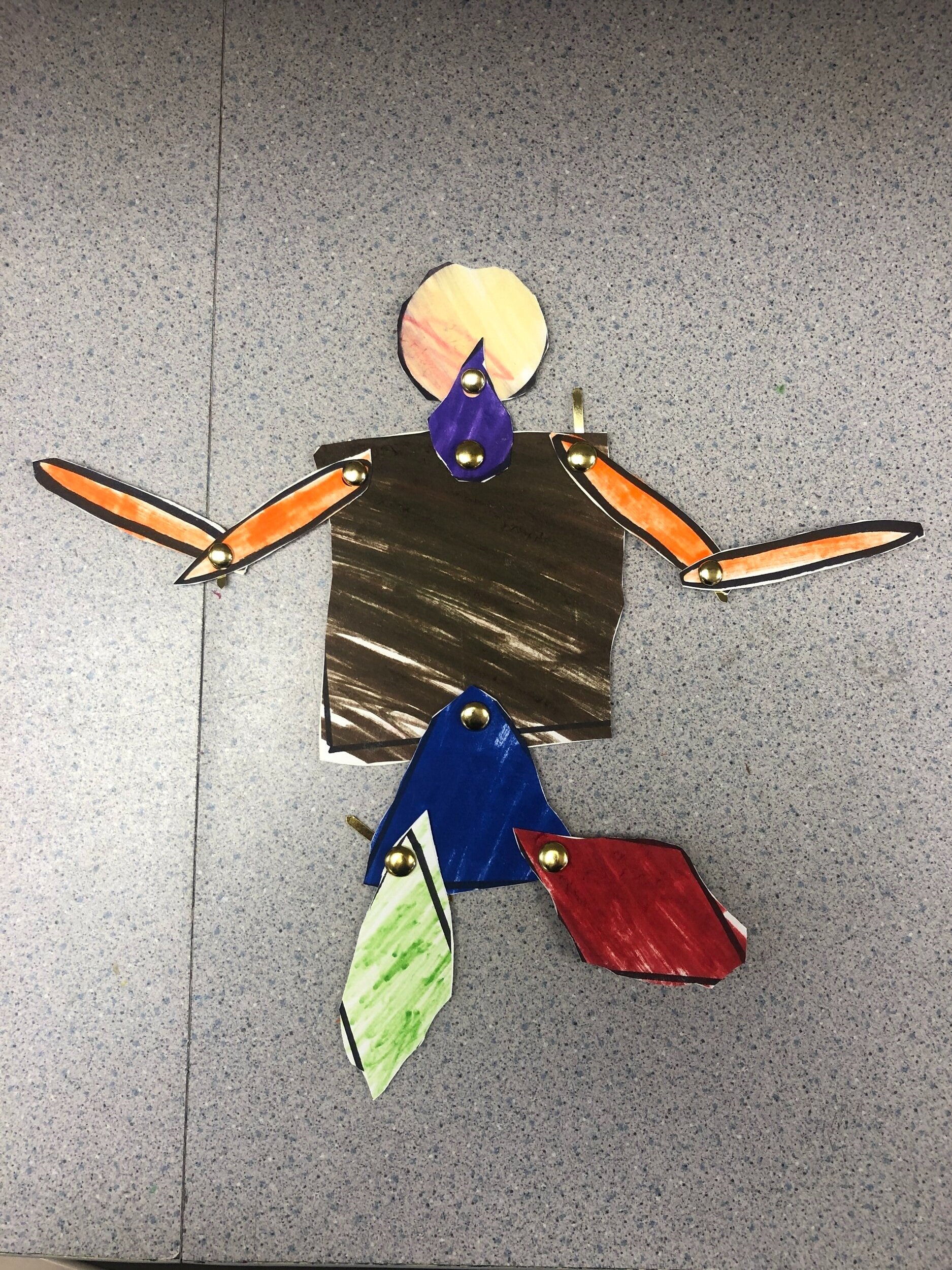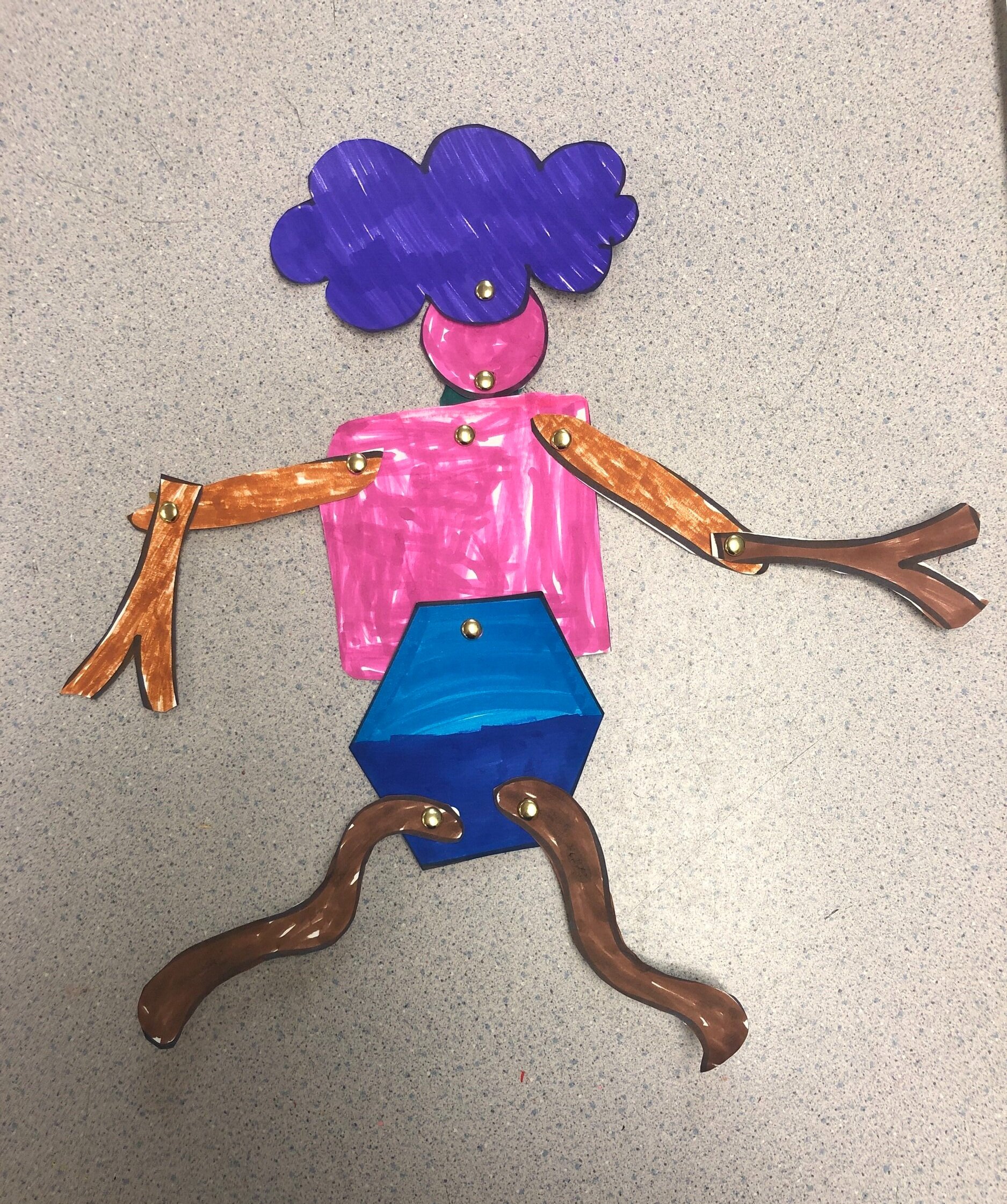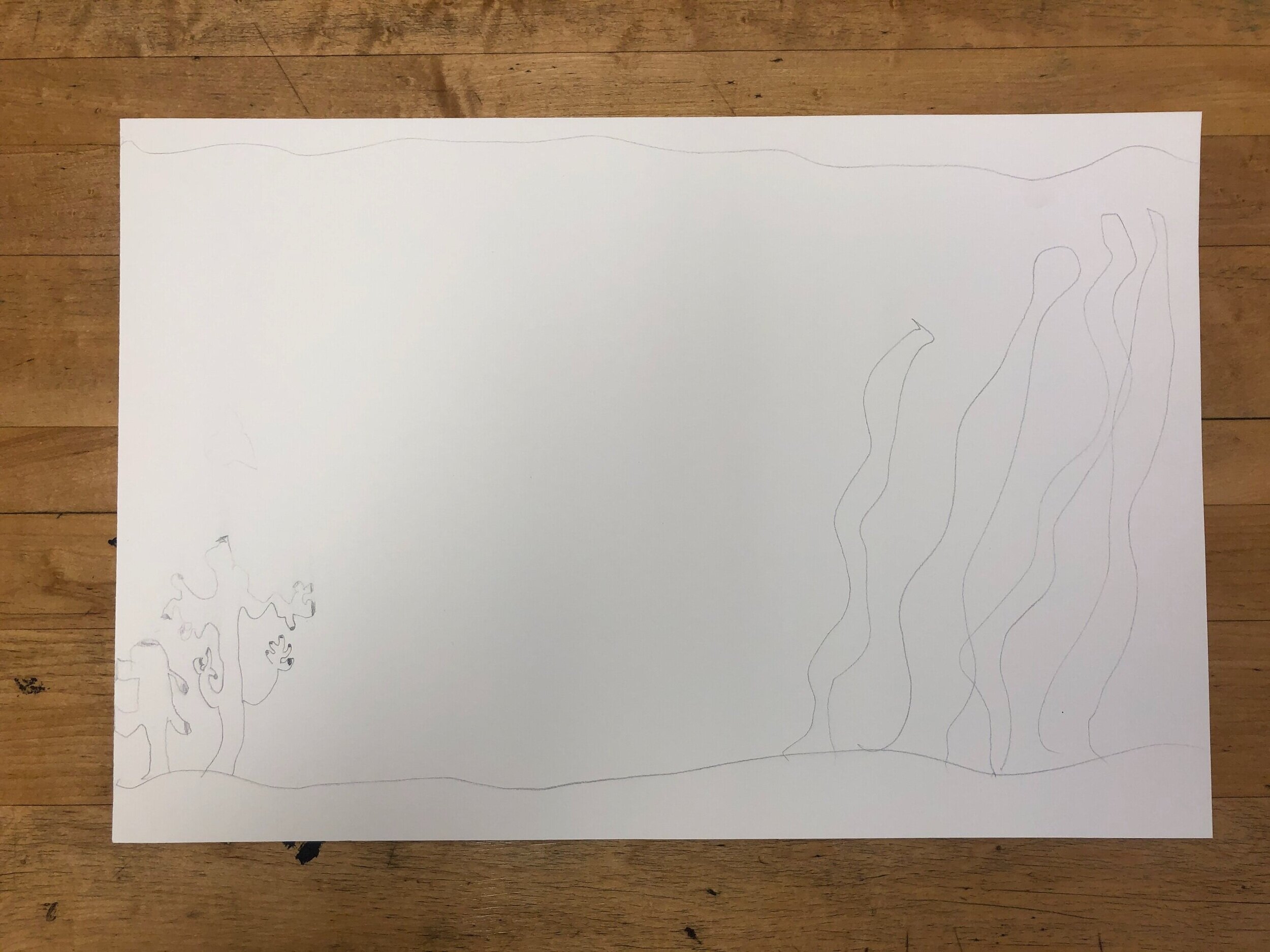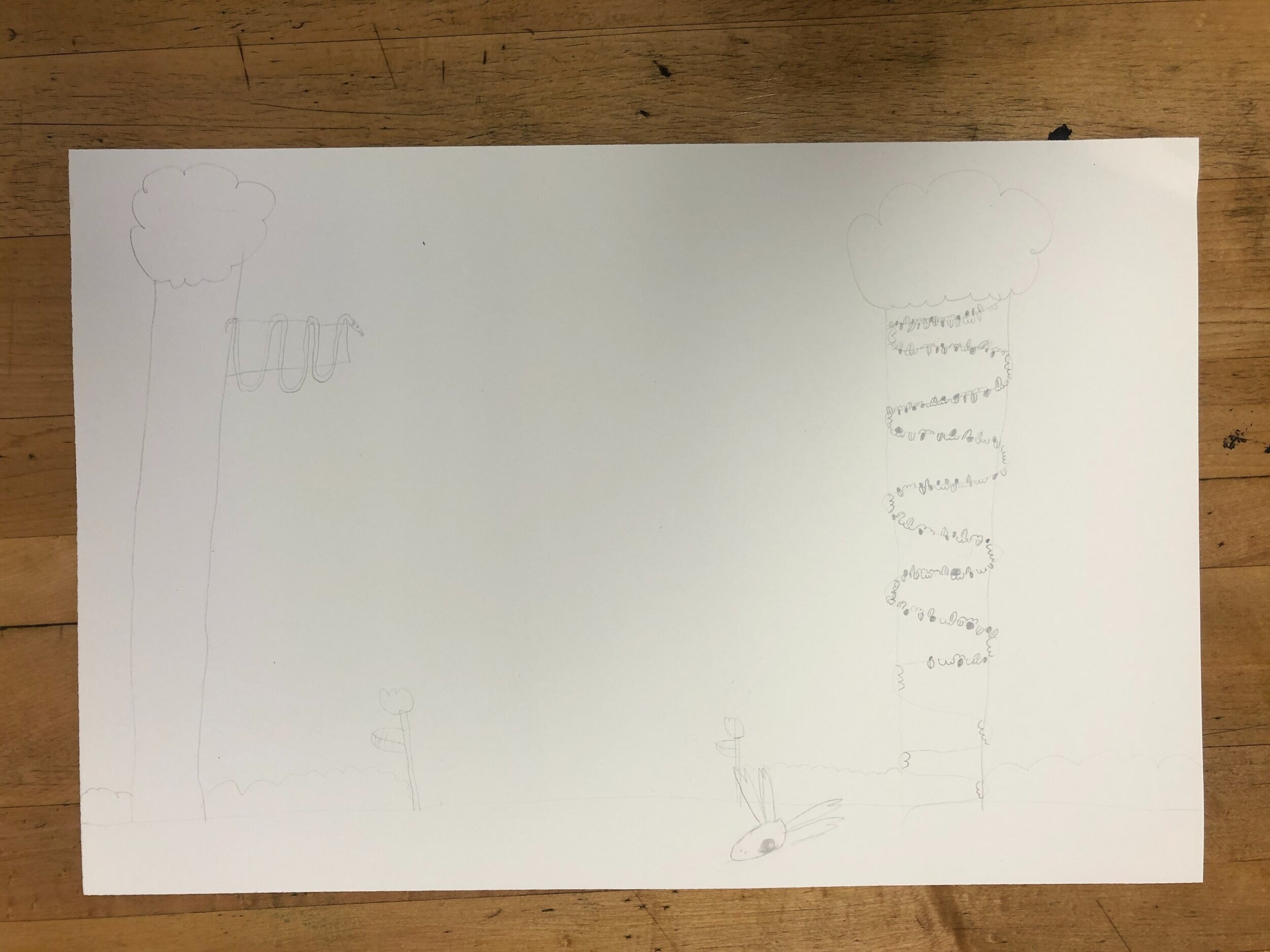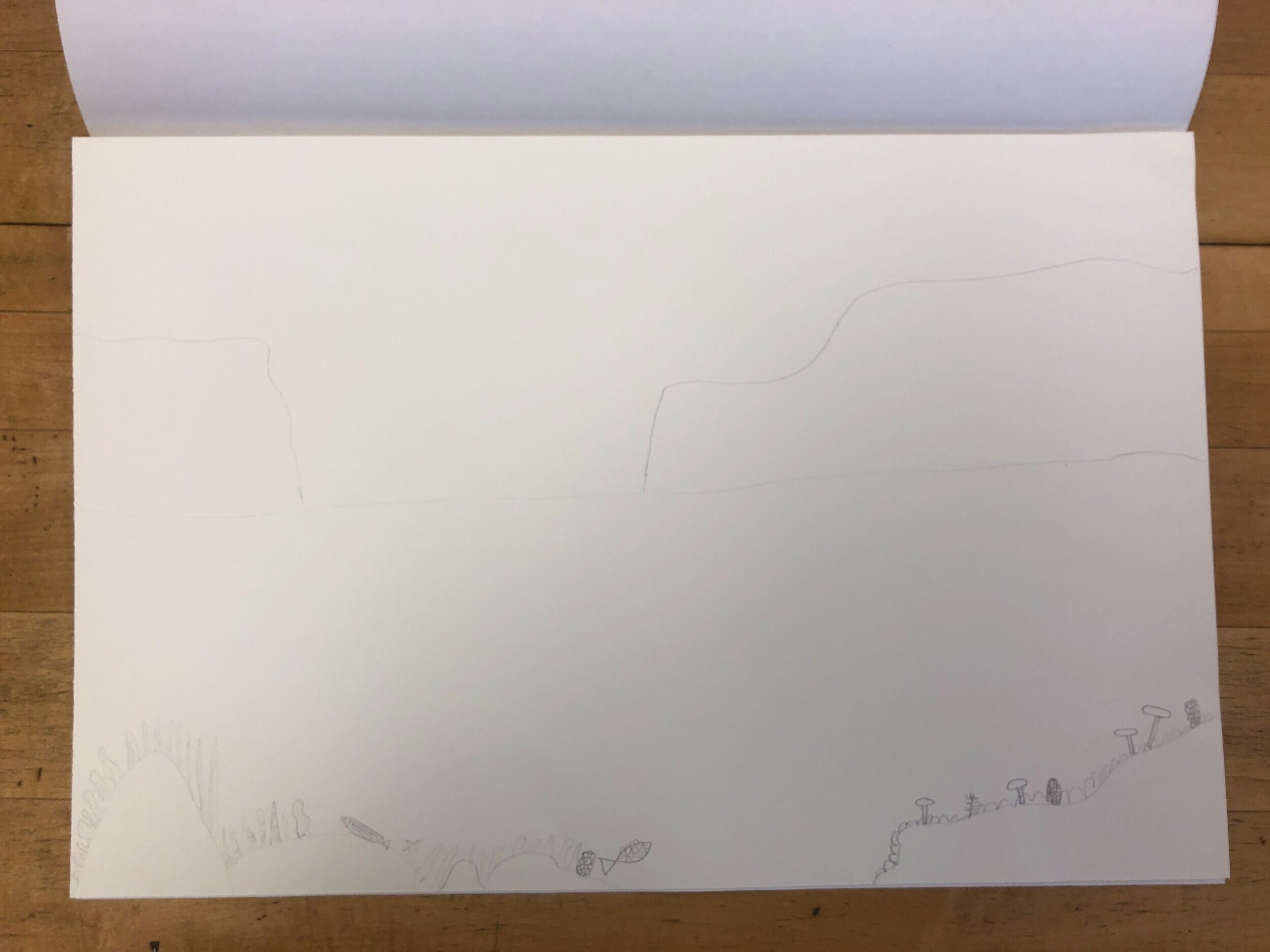Character Creation
In this unit, students created their own fictional characters and setting using color pencils and watercolor.
Essential Questions:
How are fictional characters created?
Why do we create fictional characters?
How does our environment affect us?
Standards:
Anchor Standard 1: Generate and conceptualize artistic ideas and work.
VA:Cr1.1.5a- Combine ideas to generate an innovative idea for art-making
Anchor Standard 2: Organize and develop artistic ideas and work.
VA:Cr2.1.5a Experiment and develop skills in multiple art-making techniques and approaches through practice.
VA:Cr2.2.5a Demonstrate quality craftsmanship through care for and use of materials, tools, and equipment.
Lesson Objectives:
Students will learn that they can create a fictional character by combining elements from different creatures’ heads, torsos, arms, and legs.
Students will learn that they can draw a proportional character by folding a paper into three parts.
Students will learn that they can develop a character by thinking about the environment in which they live.
Students will learn that they can give their character a variety of textures and patterns with their colored pencils.
Students will learn that they can produce different values of the same color by adding more or less water to their watercolor palettes
Reflection:
I was excited to see how eager the students were so engaged in this project and how engaged they were in the learning objects I selected for them. Through this project, I learned a lot about time management and how to integrate new students into the project seamlessly. I found that by encouraging students to ask each other for help and to collaborate our new students were able to catch right up to the rest of the class. In the future, I would be sure to give students the assessment checklist on the first day and to budget more time for their rough drafts. I would also make a folder in the classroom to hold on to students’ work and I would review why it’s important to keep working on a single piece of paper instead of starting over when a mistake has been made. I found the creative self-reflection worksheet to be really helpful in gauging how engaged students were in the project. I was able to use their responses to adapt the lesson to better engage all learners by making the connection to animation sooner than I had originally planned.


